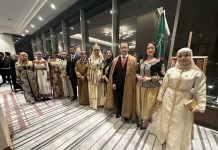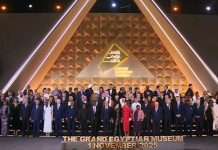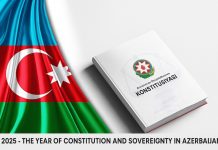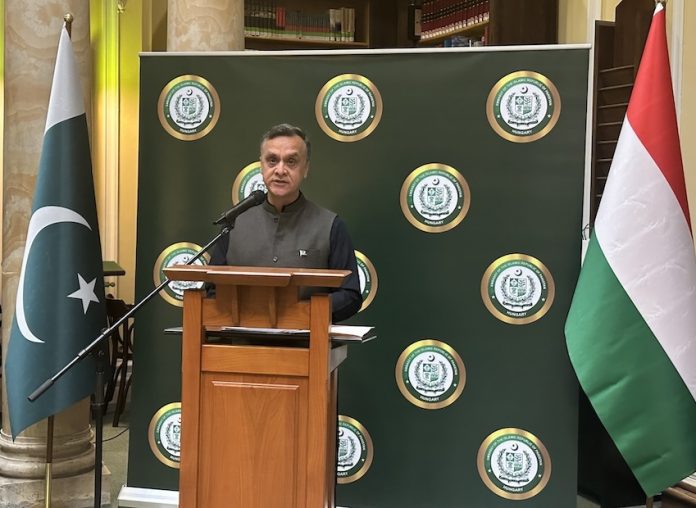Edited by Anna Popper
The Embassy of Pakistan in Hungary, in collaboration with the National Library of Foreign Literature, organised an art exhibition entitled “Allure of the East: Interpreting Tradition”, which was solemnly inaugurated on 13 October 2025. Curated by Ms. Sundas Azfer, the exhibition showcased works of twenty Pakistani visual artists, exploring the dialogue between tradition and modernity in Pakistani art.


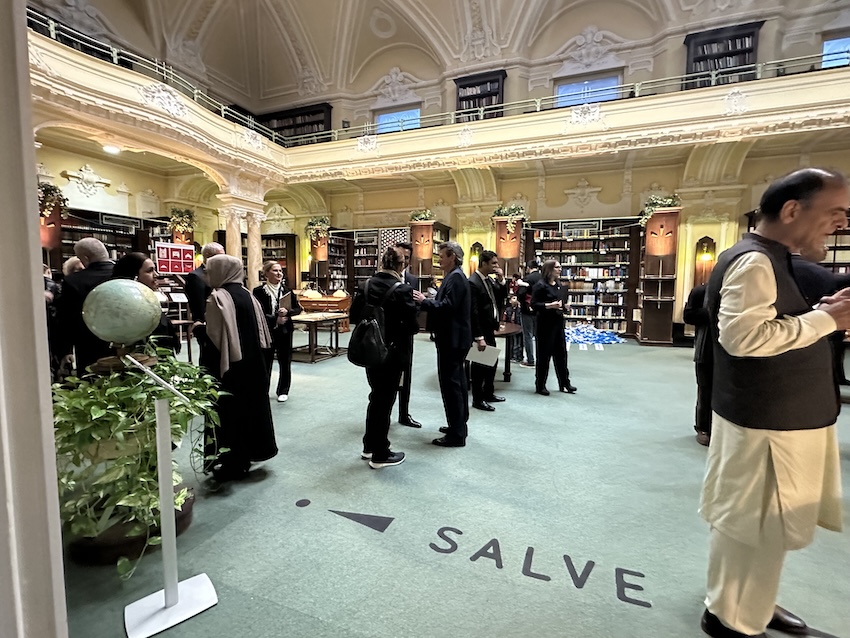
Numerous diplomats, Hungarian officials, and art enthusiasts attended the opening ceremony, who were welcomed by His Excellency Mr. Asif Hussain Memon, Ambassador of Pakistan to Hungary, and his spouse. Dr. Sándor Fazekas, Deputy Speaker of the Hungarian National Assembly, graced the event as Chief Guest.
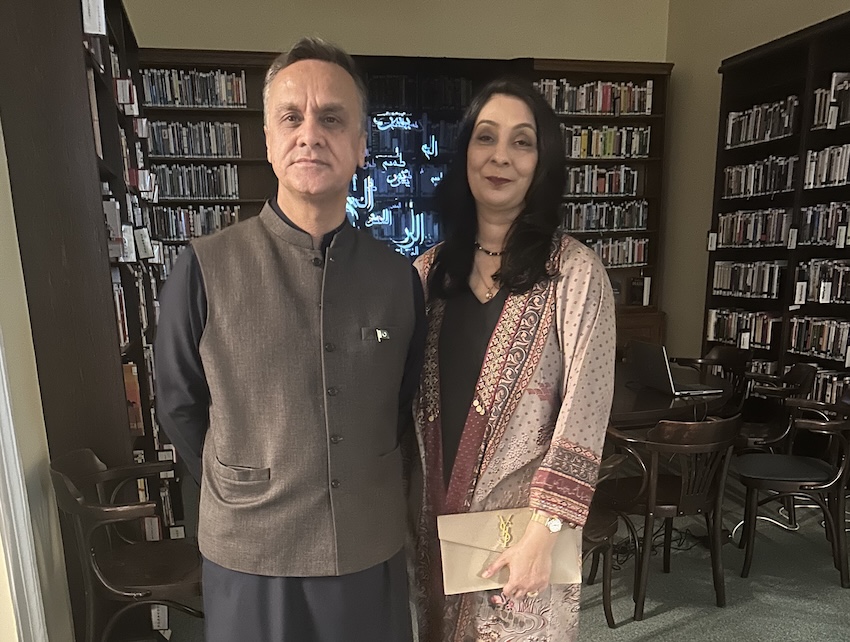
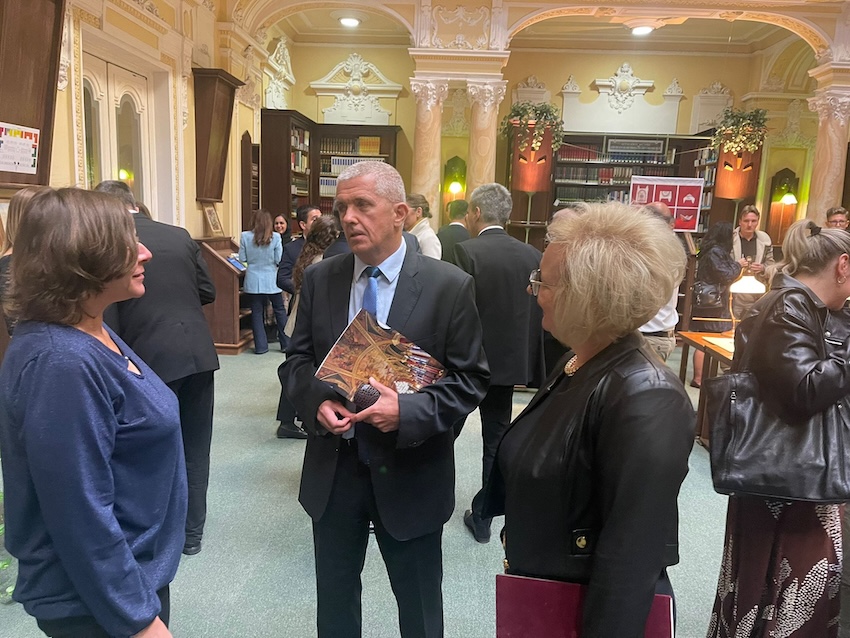
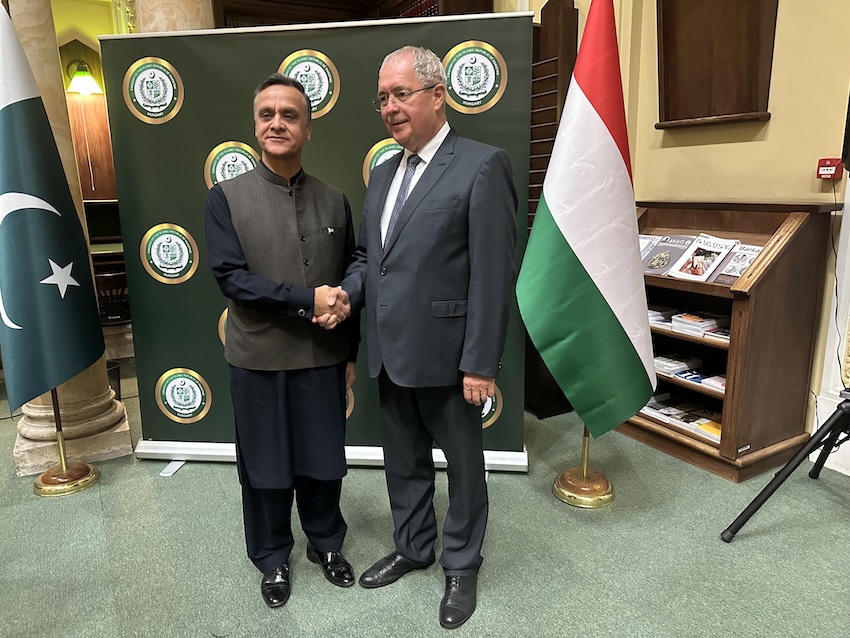
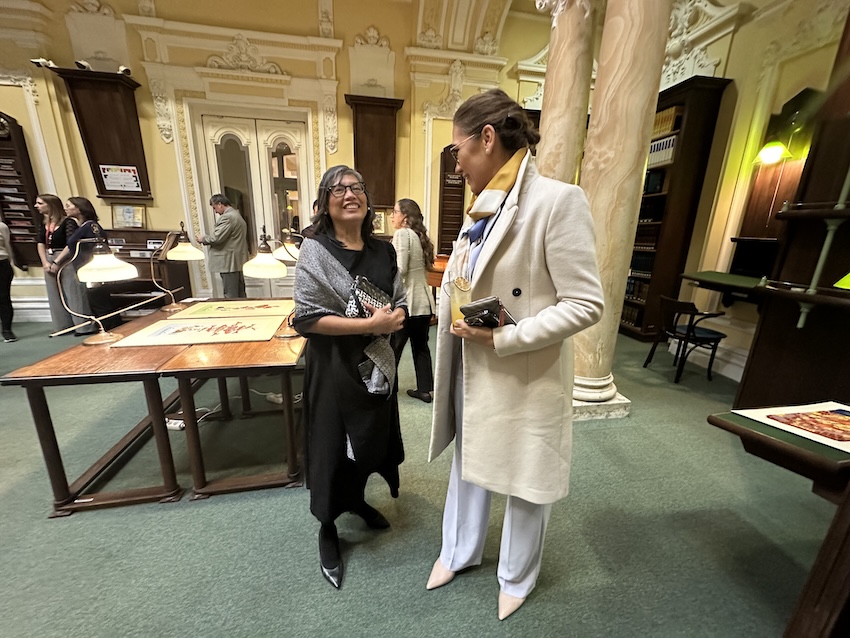
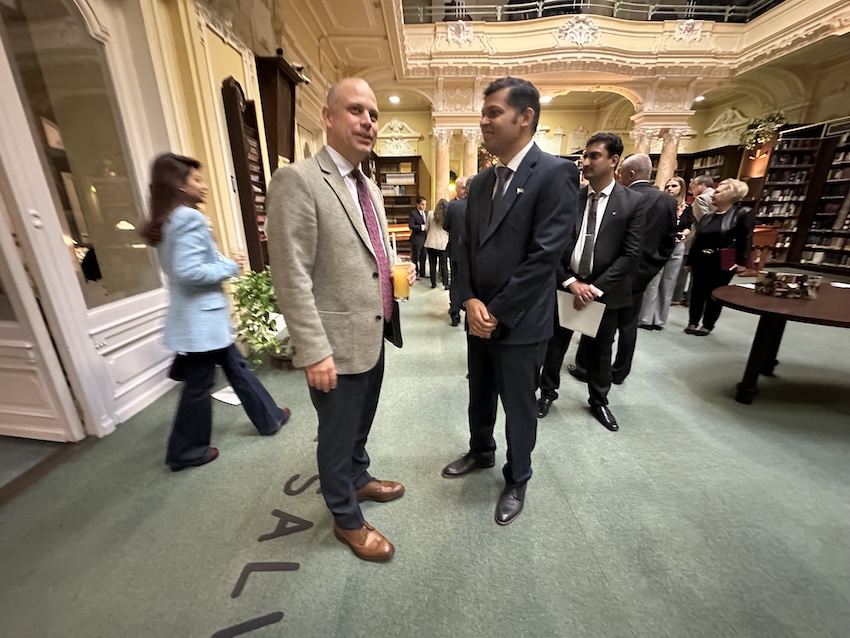
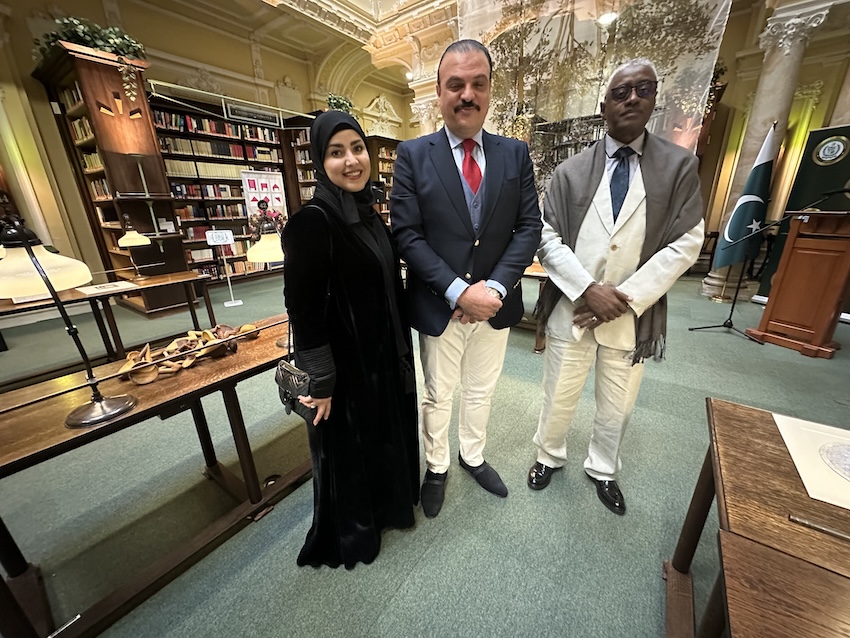

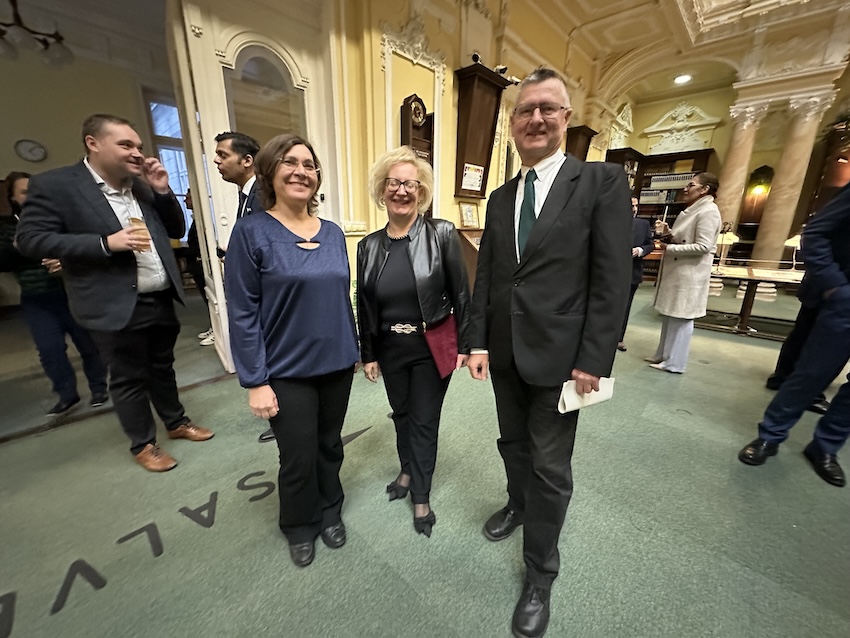
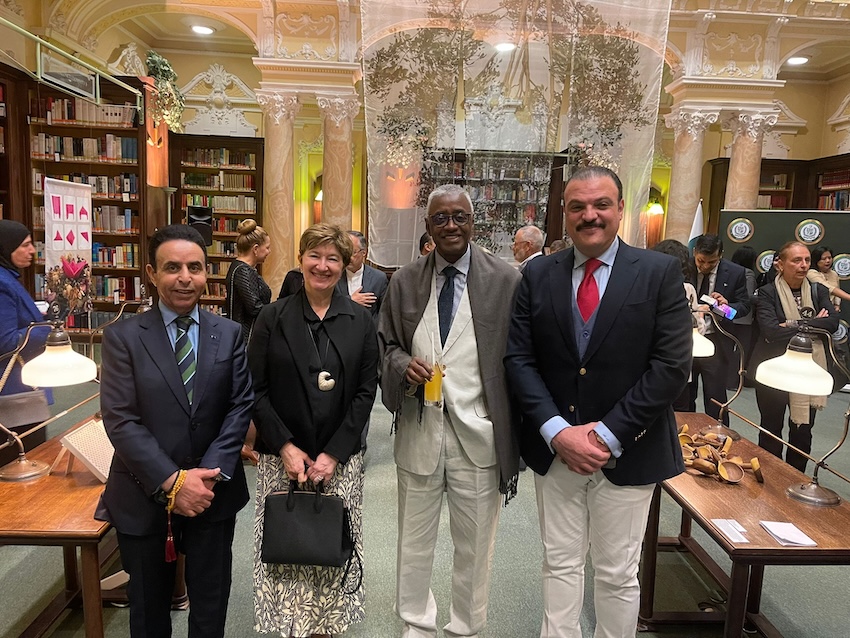
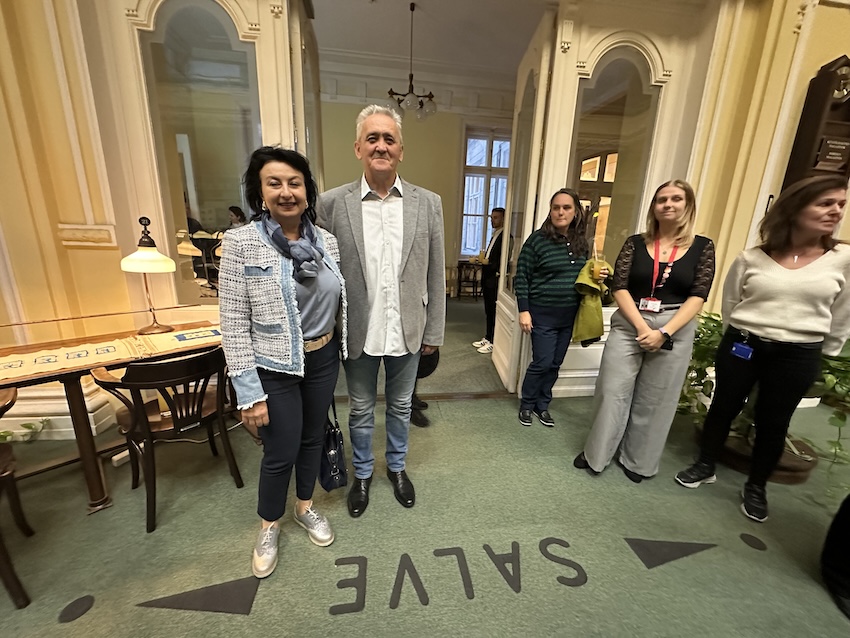
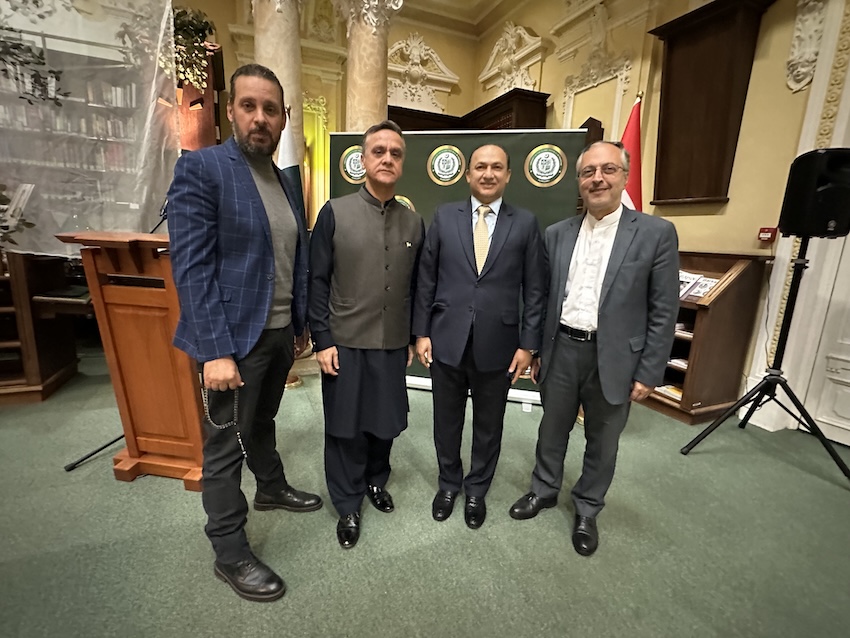
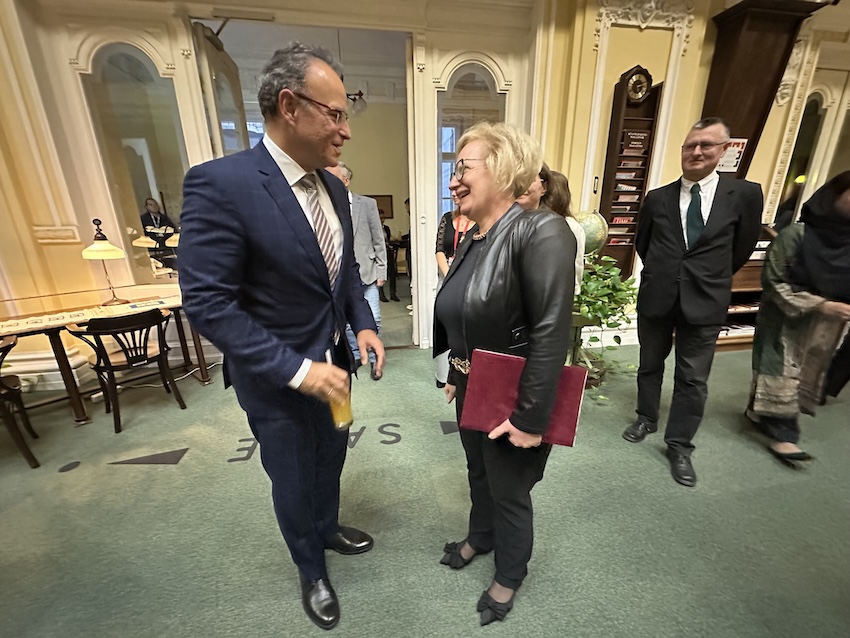
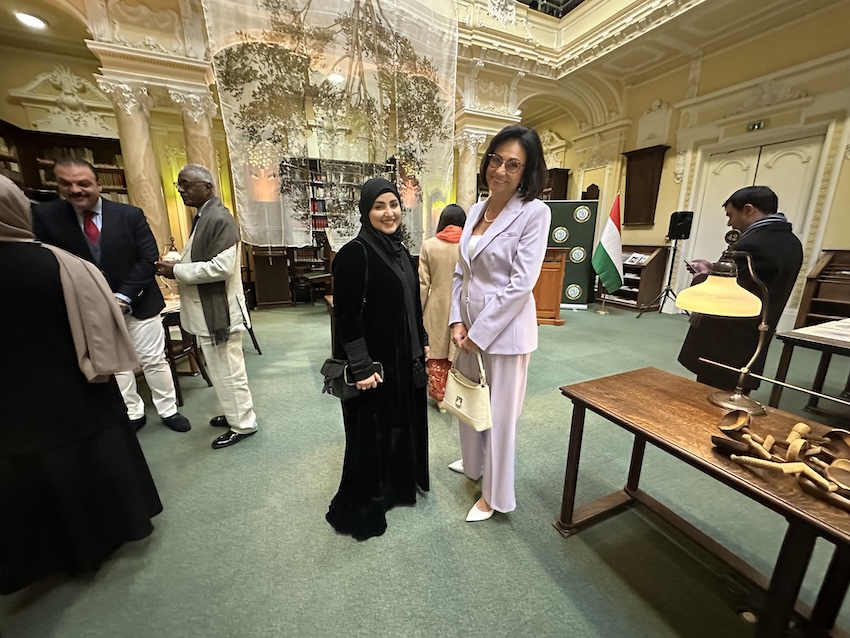
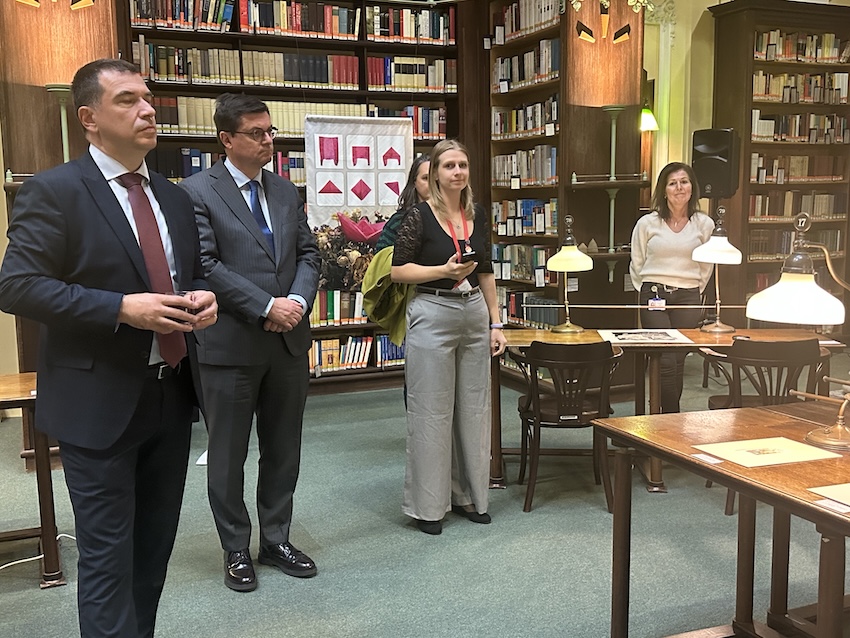
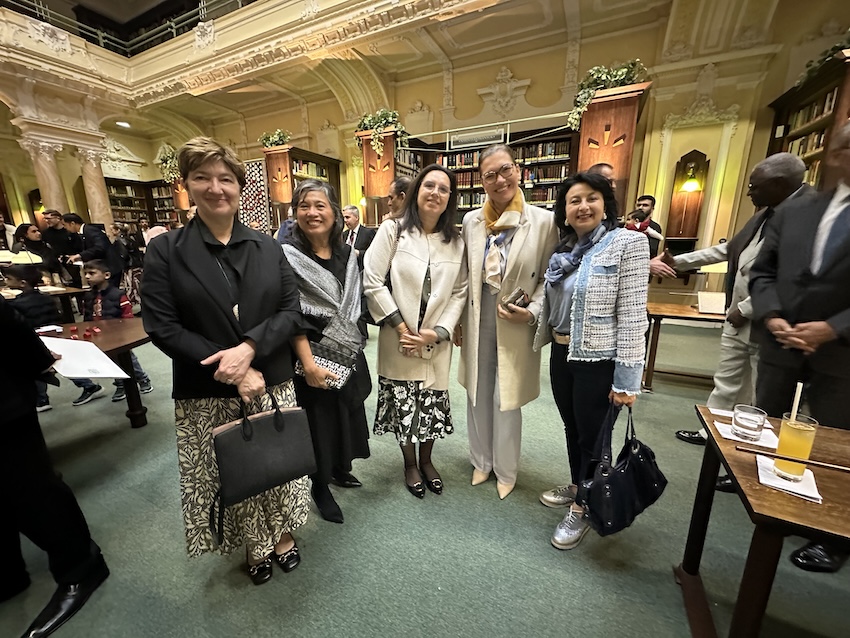
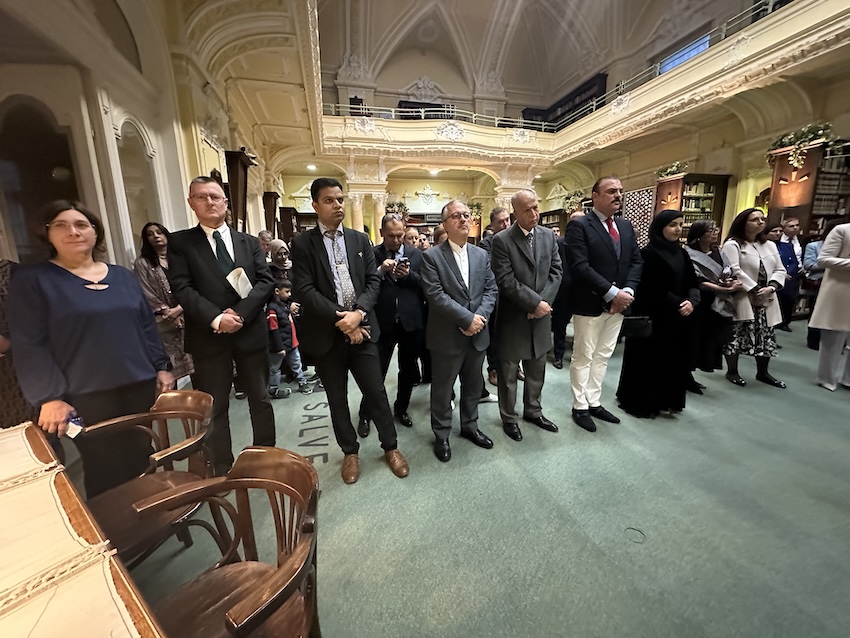
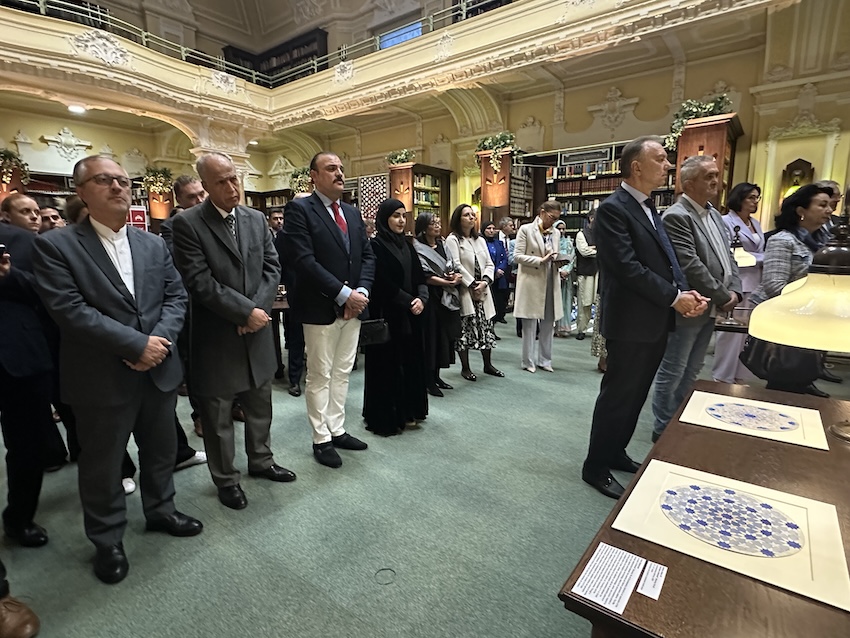
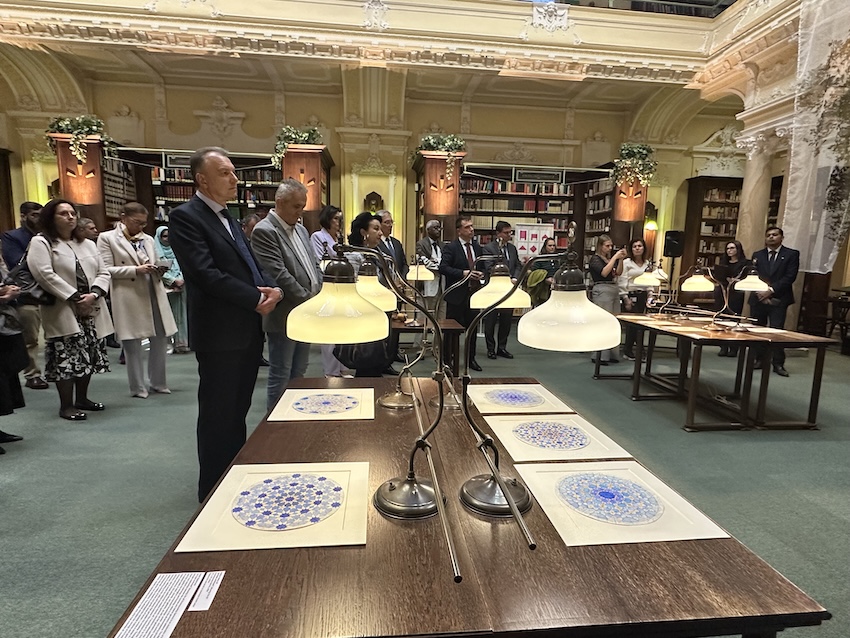
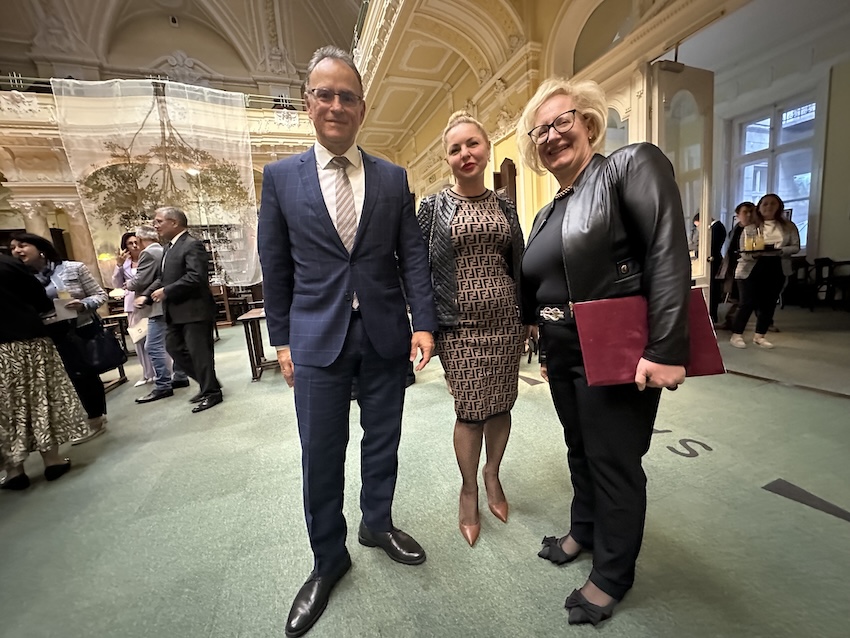
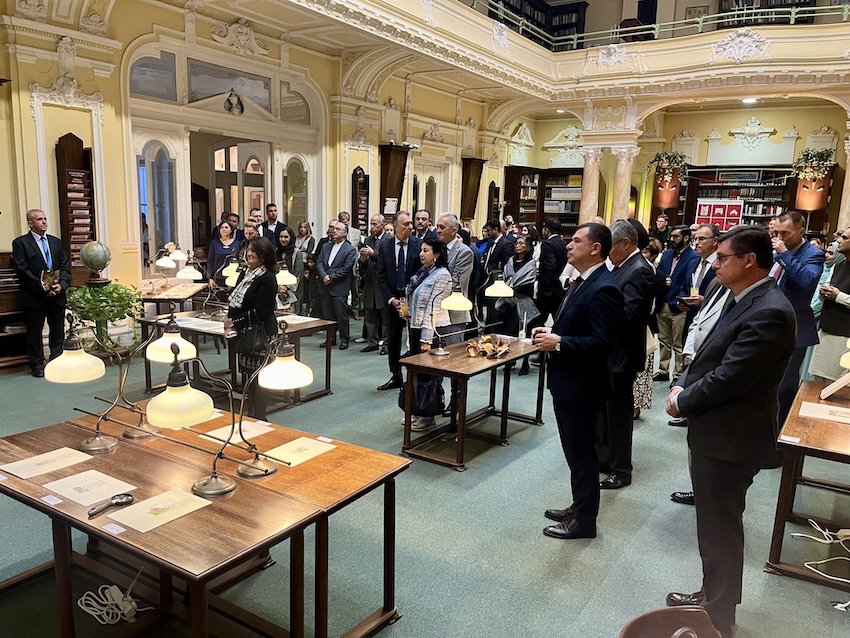
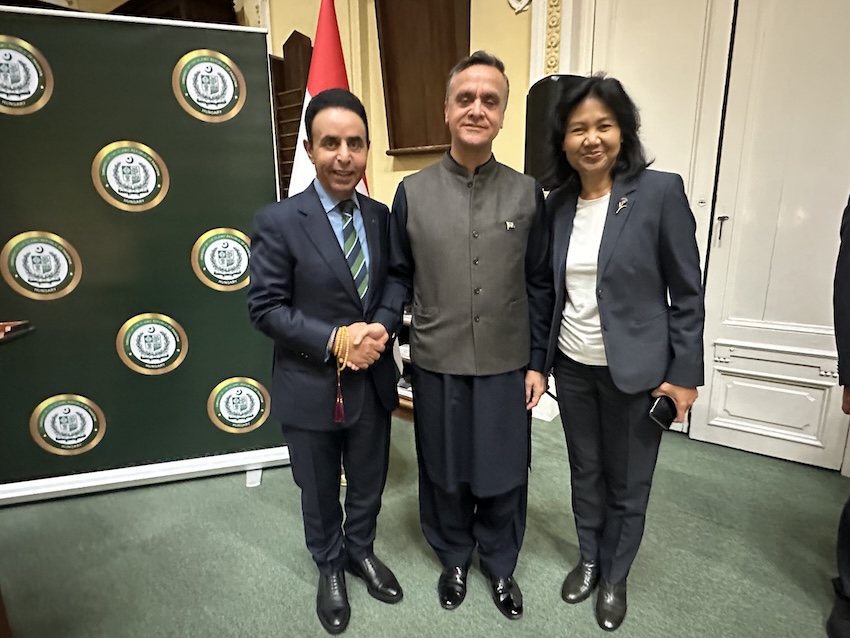
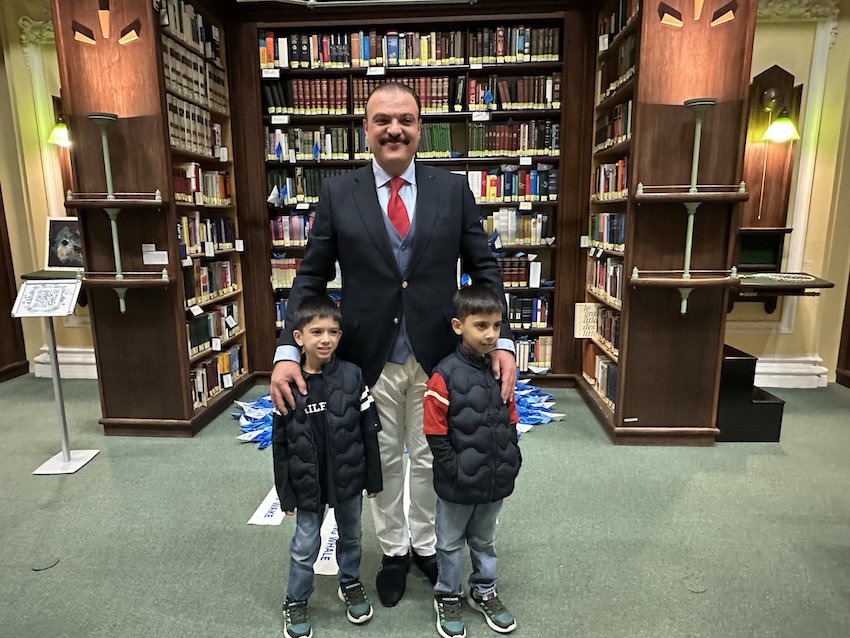
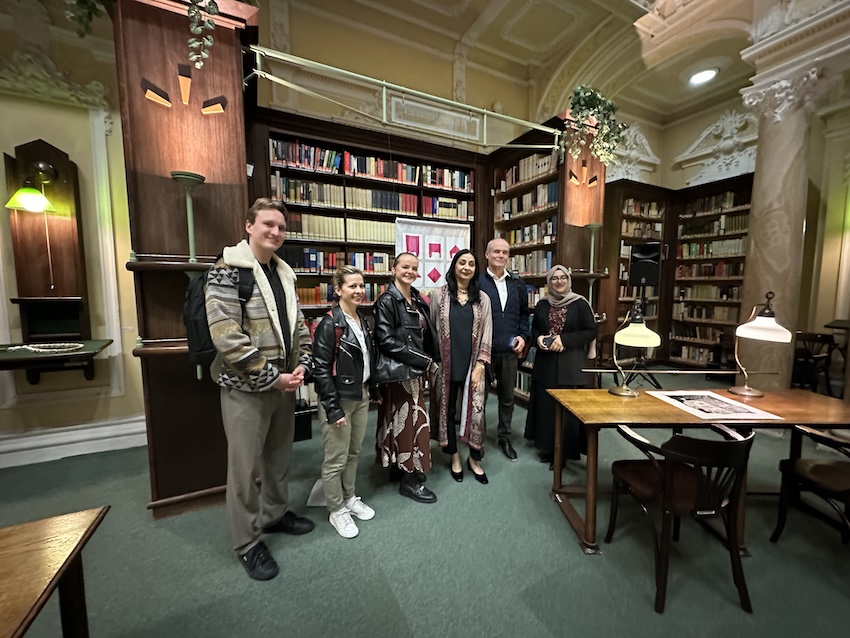
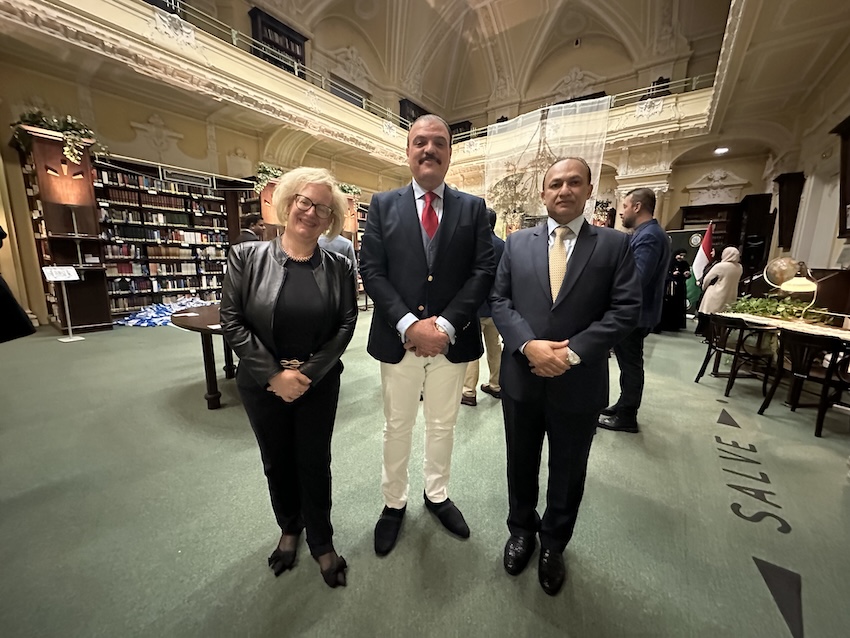
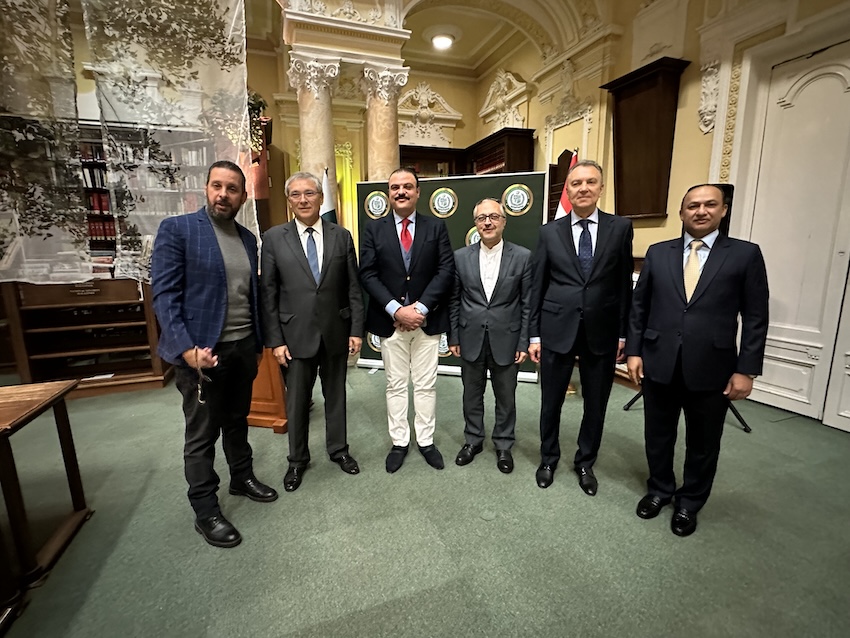
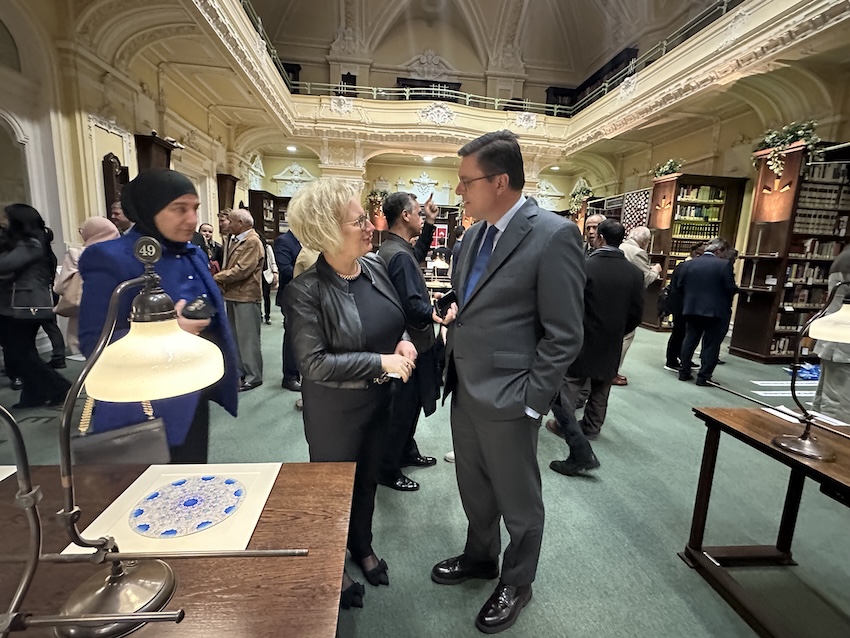

Opening address by H.E. Mr. Asif Hussain Memon, Ambassador of Pakistan to Hungary

“Welcome to the opening of the exhibition ‘Allure of the East: Interpreting Tradition’.
I would like to thank the National Széchényi Library for supporting our proposal and the National Library of Foreign Literature for hosting this event.
My gratitude also goes to Ms. Sundas Azfer, the Curator of this exhibition, who travelled all the way from Pakistan to Budapest for this occasion. Without her, today’s event would not have been possible.
I must also acknowledge Dr. Javeria Nabahat Amin, an artist whose works are displayed here and who travelled from Saudi Arabia to join us.

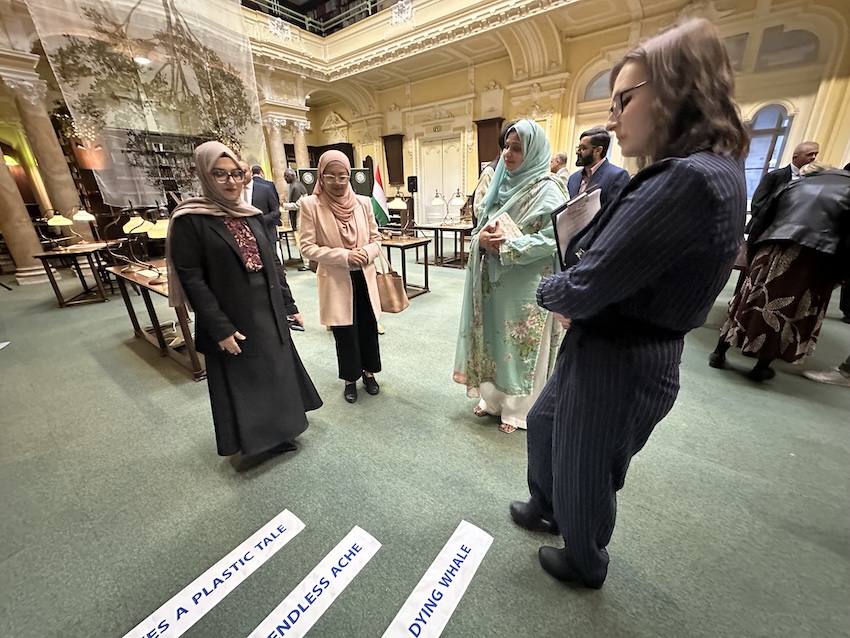

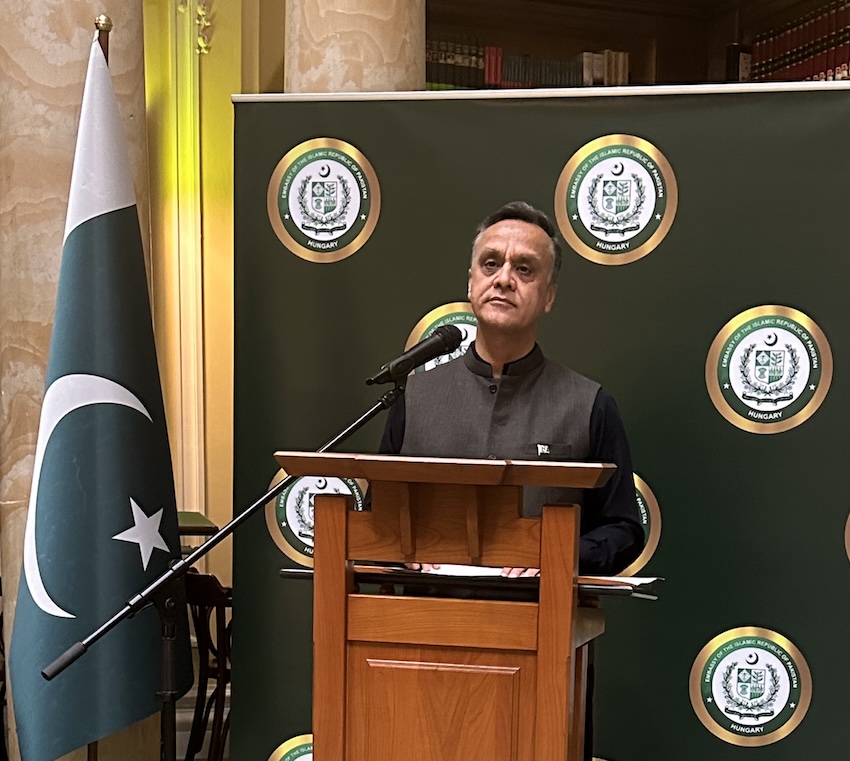
Special credit goes to my wife Natasha, who acted as a bridge between the Embassy and the Curator, both for this exhibition and the previous one that we held in 2023. This is the second exhibition the Embassy has organised in Budapest – the first took place in September 2023, for which I thank the Ambassador of Türkiye for providing the venue.
This exhibition explores tradition not as something frozen in time, but as a living, evolving dialogue between past and present. Through the works of 20 Pakistani artists, we witness how cultural heritage is preserved, reinterpreted, and made relevant for contemporary audiences. Each piece embodies the ongoing conversation between tradition and modernity.
Today’s exhibition is especially meaningful as Pakistan and Hungary celebrate 60 years of diplomatic relations – sixty years of friendship. Yet our cultural ties go beyond these six decades. Let me share two examples:
The first concerns August Schoefft, a Hungarian artist born in Pest in 1809, renowned for his paintings of Maharaja Ranjit Singh’s court in 1841. One of his masterpieces is on display in the Lahore Museum and was restored in 2021 with the assistance of Hungarian experts.

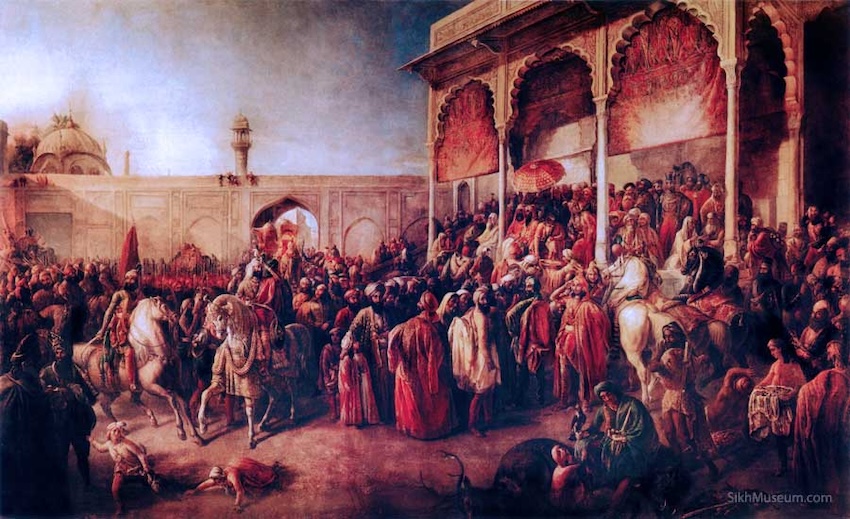
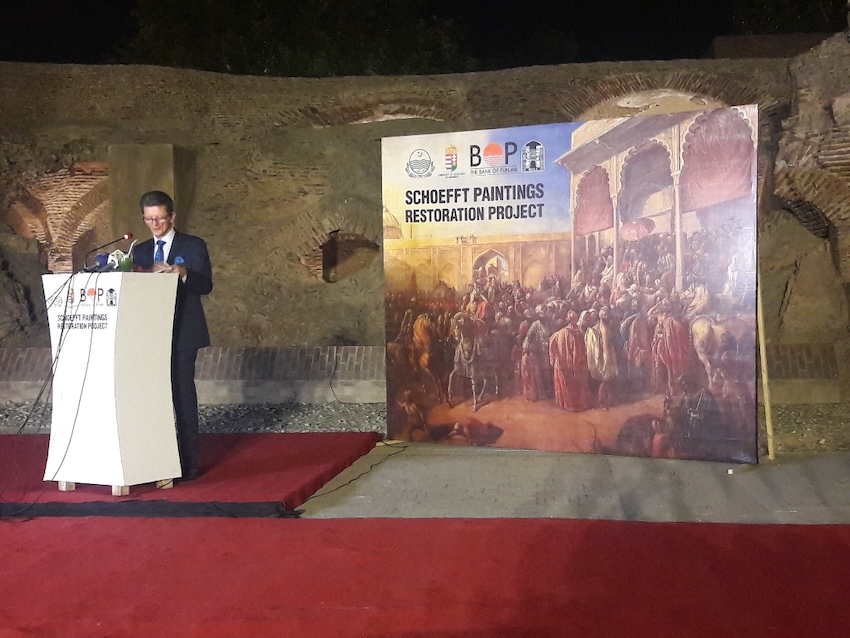
The second example involves Allama Iqbal, Pakistan’s national poet, who in 1924 wrote a poem in Persian, praising the Hungarian poet Sándor Petőfi for his valour and bravery. Last year, I had the privilege to see Iqbal’s handwritten poem and notes in the National Széchényi Library – thanks to Ms. Judit Gerencsér, Deputy Director General. The authenticity of these manuscripts was confirmed by Iqbal’s great-grandson.
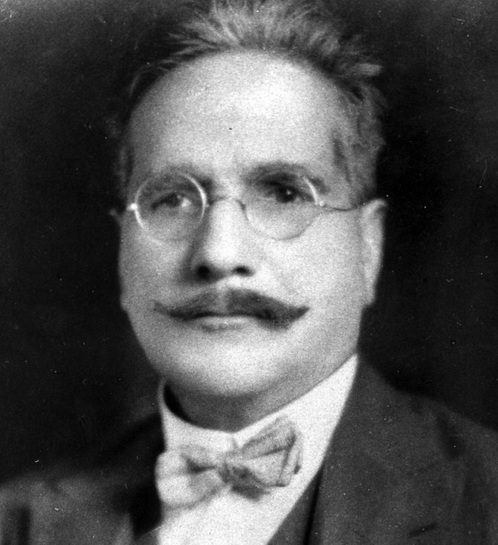
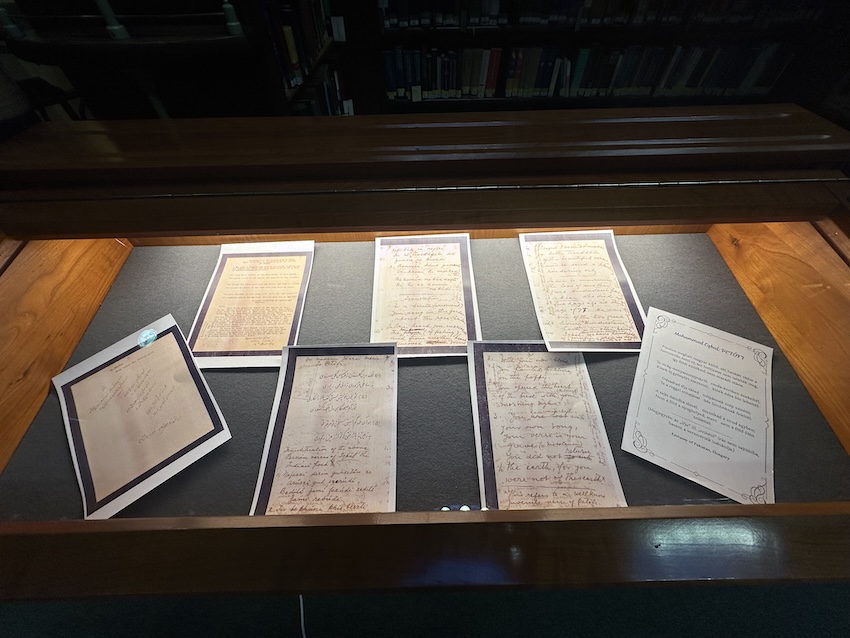
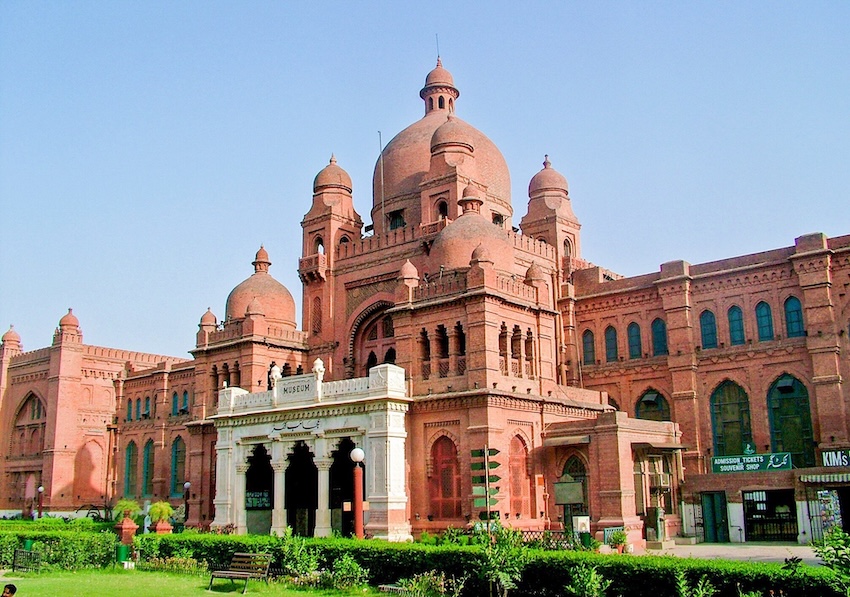
Interestingly, the translation notes were written by Umrao Singh Sher-Gil, father of the celebrated Hungarian artist Amrita Sher-Gil. Copies of the poem and the translation are on display here today. Incidentally, paintings by Amrita Sher-Gil (1913-1941, born in Budapest, died in Lahore) are also exhibited in the Lahore Museum in Pakistan, thus beautifully connecting our cultural histories. So, if you get an opportunity to visit Lahore, please visit its museum to see the works of the Hungarian artist.
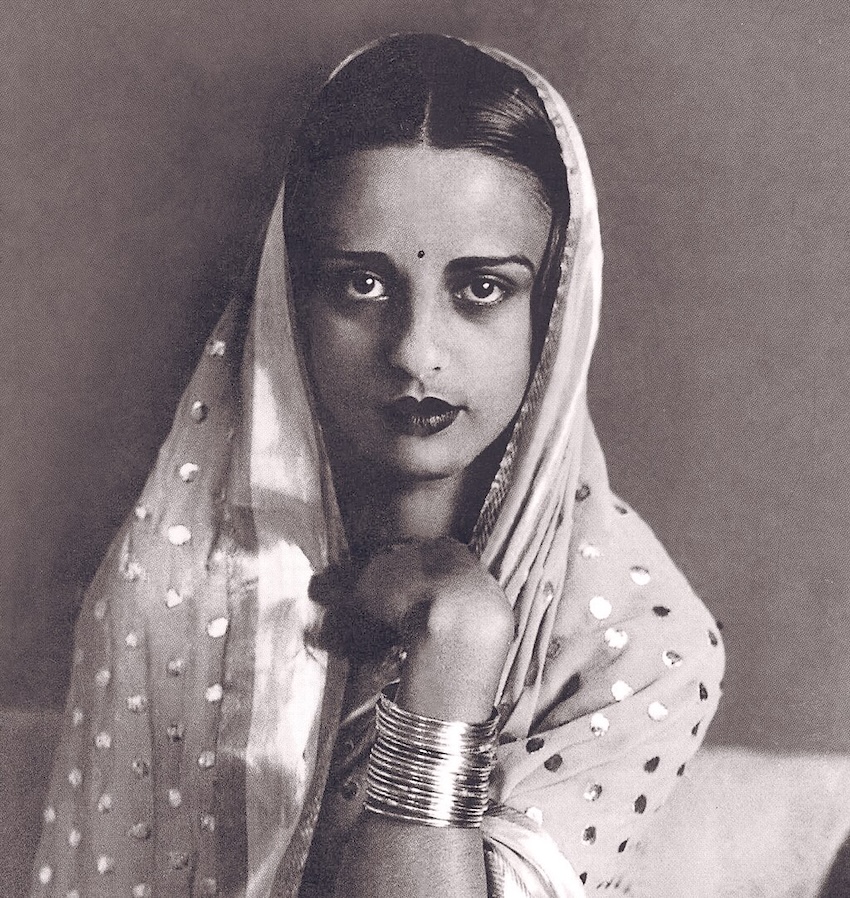
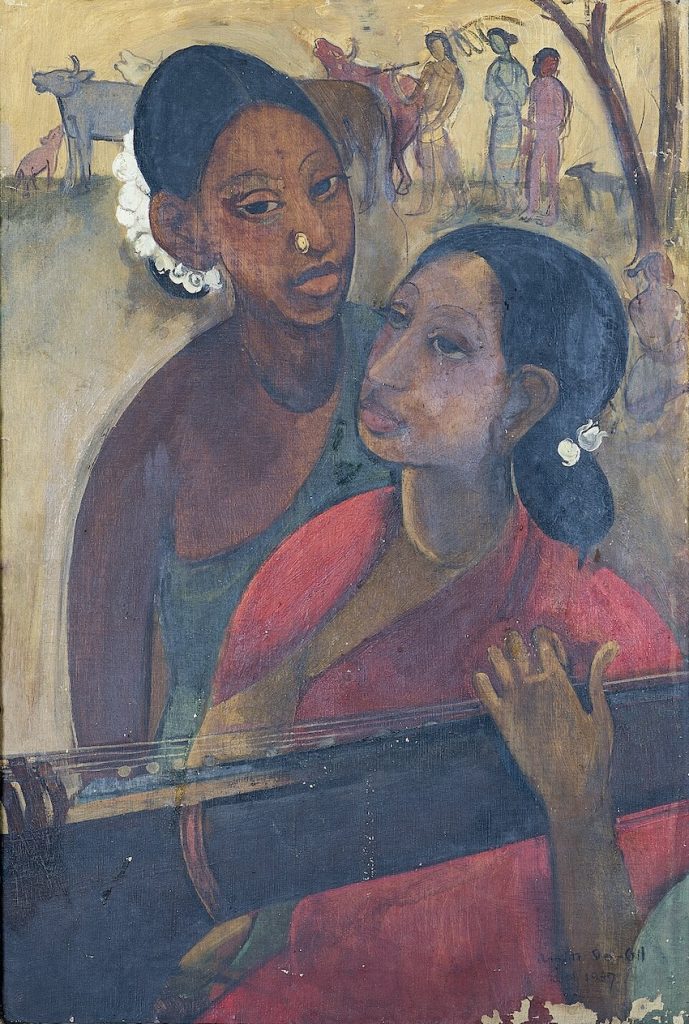
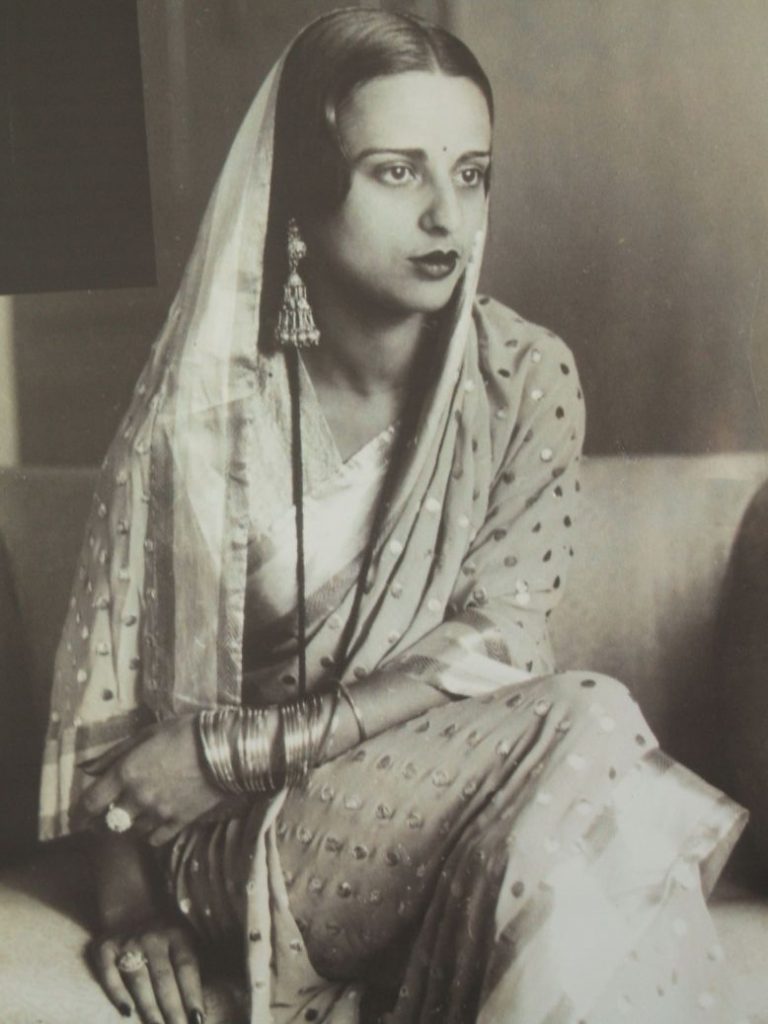
These are just two of many examples of the deep cultural links between Pakistan and Hungary. Beyond culture, our nations maintain strong ties in political, economic, and educational fields. Frequent exchanges and shared perspectives reaffirm our mutual desire to continue expanding these fraternal relations.
Dear Guests, I invite you to explore this exhibition – let the colours, textures, and stories within these artworks inspire you.”

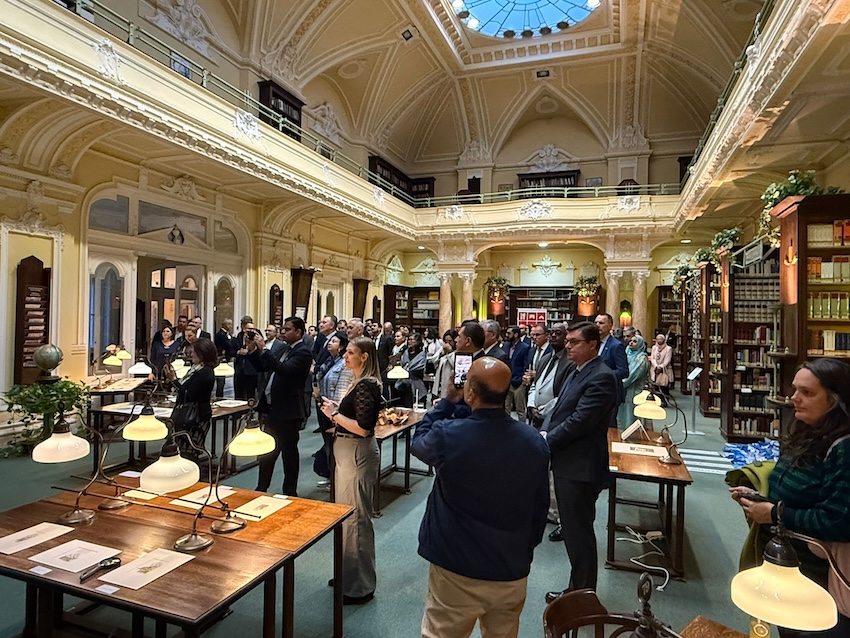
Speech by Ms. Judit Gerencsér, Deputy Director General of the National Széchényi Library
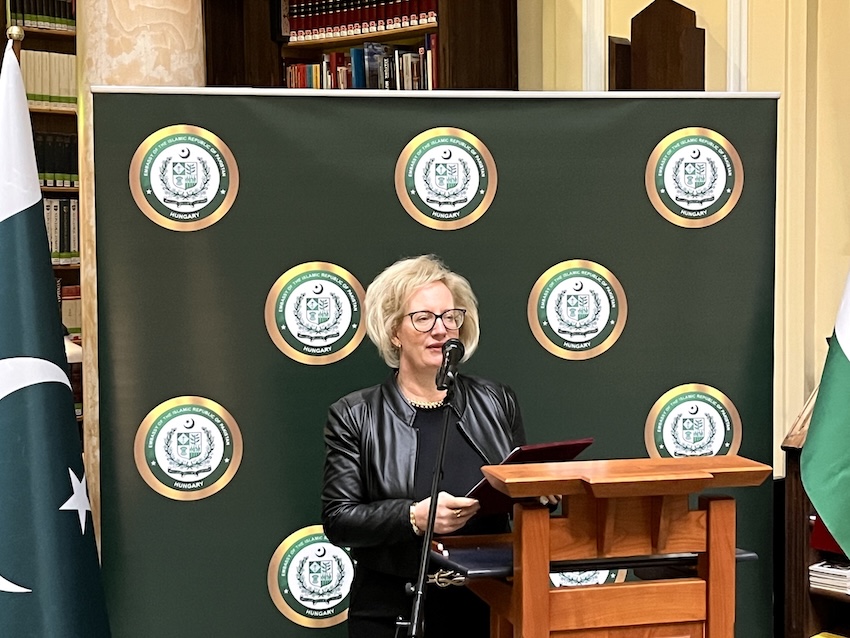
“It is a great pleasure and a distinct honour to welcome you all to the opening of the exhibition ‘Allure of the East: Interpreting Tradition.’ The last time I had the privilege of meeting His Excellency Mr. Asif Hussain Memon was in July 2024, during his visit to the National Széchényi Library. On that memorable occasion, we exchanged ideas on potential avenues for cultural collaboration between the National Library of Pakistan, the Embassy of Pakistan, and our own institution.
Today’s exhibition continues that spirit of cooperation and mutual understanding. The twenty exhibiting artists reinterpret tradition in their works – that living heritage which continues to shape our identity. One of the profound contributions of this exhibition lies in how it encourages us to reflect on the nature of tradition itself. Philosophically speaking, tradition is not static; it connects us to the past while enabling us to make sense of the present. By opening this exhibition, we symbolically open a deeper and more beautiful dimension – that of self-understanding.

This self-understanding may manifest differently for the artists and for us, the viewers, yet we are united through dialogue – a dialogue inspired by art. This dialogue allows us to feel at home in the world, to appreciate what Pakistani art expresses – whether through an artwork, a motif of nature, or even something as evocative as a mango, a symbol of friendship, generosity, and warmth in Pakistan’s culture.
Perhaps the most beautiful message of this exhibition is that the language of art transcends borders. Forms, colours, and images speak directly to the heart, regardless of our origins, languages, or traditions. As Faiz Ahmed Faiz so eloquently wrote: ‘The language of beauty is understood by every heart.’
This exhibition speaks precisely in that language – the shared language of beauty, tradition, and human sensitivity – through which Pakistan and Hungary engage in meaningful cultural dialogue. I sincerely thank everyone who contributed to the preparation and realization of this remarkable event – a true celebration of art, friendship, and culture. Thank you for honouring us with your presence.”
Remarks by Ms. Sundas Azfer, Curator
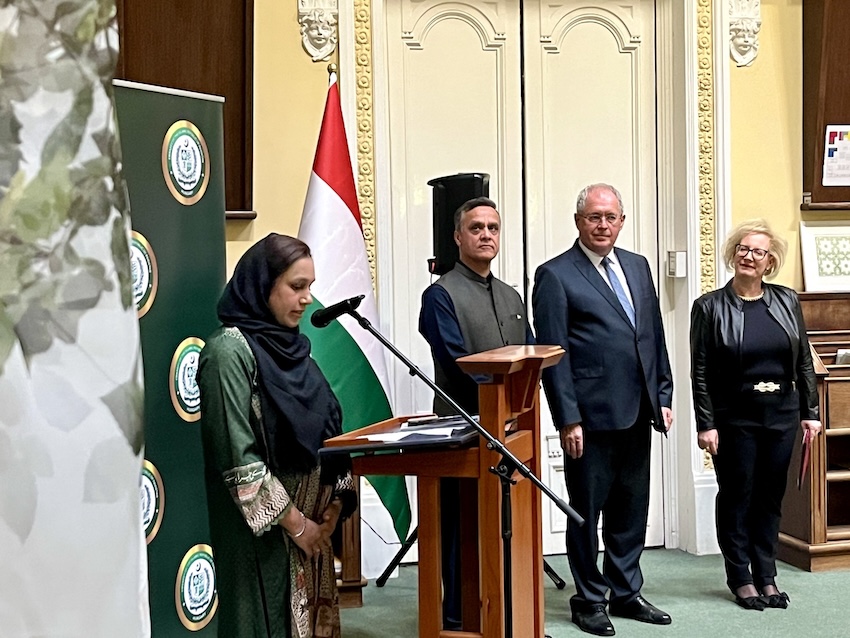
“It is an absolute honour to welcome you all to ‘Allure of the East: Interpreting Tradition.’ Being here in Budapest – a city that lives and breathes art – makes this exhibition especially meaningful. I would like to express my deepest gratitude to His Excellency, the Ambassador of Pakistan, for his encouragement and vision in bringing this project to life, and to our Chief Guest, Dr. Sándor Fazekas, for gracing this occasion.
The exhibition presents the works of 20 artists – emerging, mid-career, and senior – who explore how tradition continues to shape our national identity. From Narjis Mirza’s video installations to the miniature paintings of Sakina and Alifya, and the ceramics of Javaria Ahmad, each artist reinterprets tradition through a contemporary lens, offering fresh perspectives on Pakistan’s cultural heritage.
My heartfelt thanks go to all participating artists and to the National Library of Foreign Literature. For us, this exhibition is not merely about displaying art; it is about sharing a part of Pakistan’s soul through the universal language of art.”
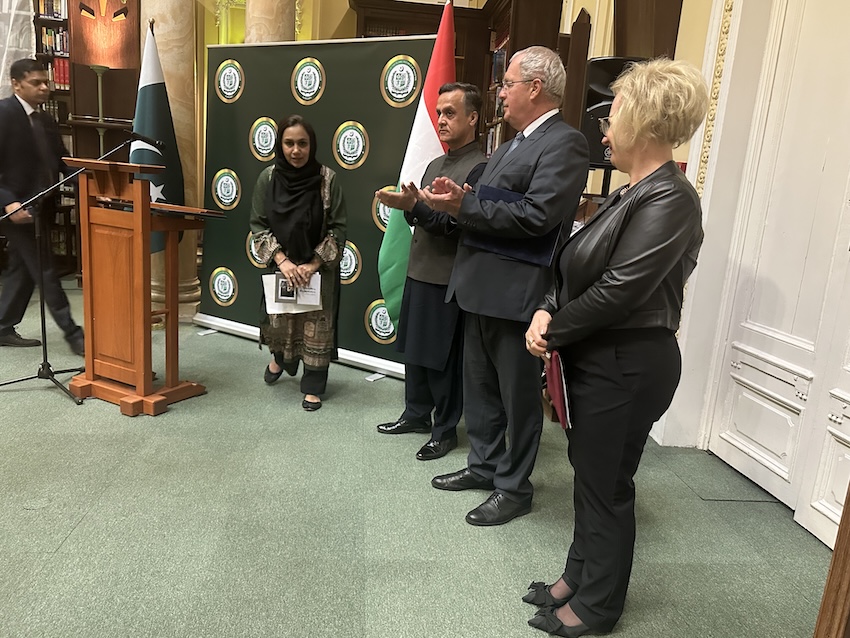
Address by Dr. Sándor Fazekas, Deputy Speaker of the Hungarian National Assembly (Chief Guest)

“It is a great honour to represent the Hungarian National Assembly at this exhibition, organized by the Embassy of the Islamic Republic of Pakistan to mark the 60th anniversary of diplomatic relations between Hungary and Pakistan. As the evocative title suggests, we are invited on a unique artistic and cultural journey that bridges Pakistan’s past and present through the eyes of its artists.
I extend my sincere gratitude to the participating artists, curators, and organizers – especially the Ambassador – for making this event possible.
Since establishing diplomatic relations in 1965, Hungary and Pakistan have steadily strengthened cooperation in politics, economy, trade, education, and culture. Regular high-level consultations at both governmental and parliamentary levels have further deepened our ties. Notably, Minister Péter Szijjártó’s visit to Islamabad in last April and Speaker Sardar Ayaz Sadiq’s visit to Budapest in February 2025 marked important milestones in our ongoing dialogue.


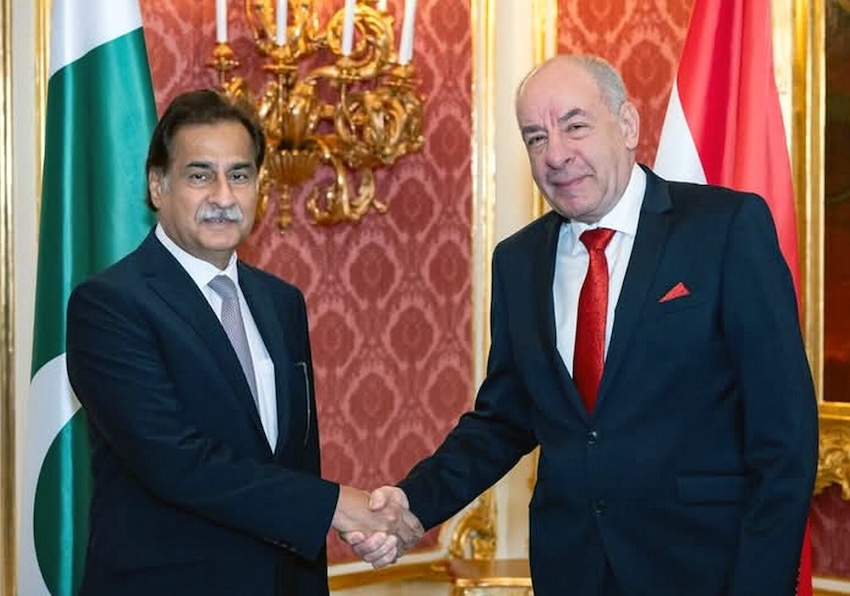
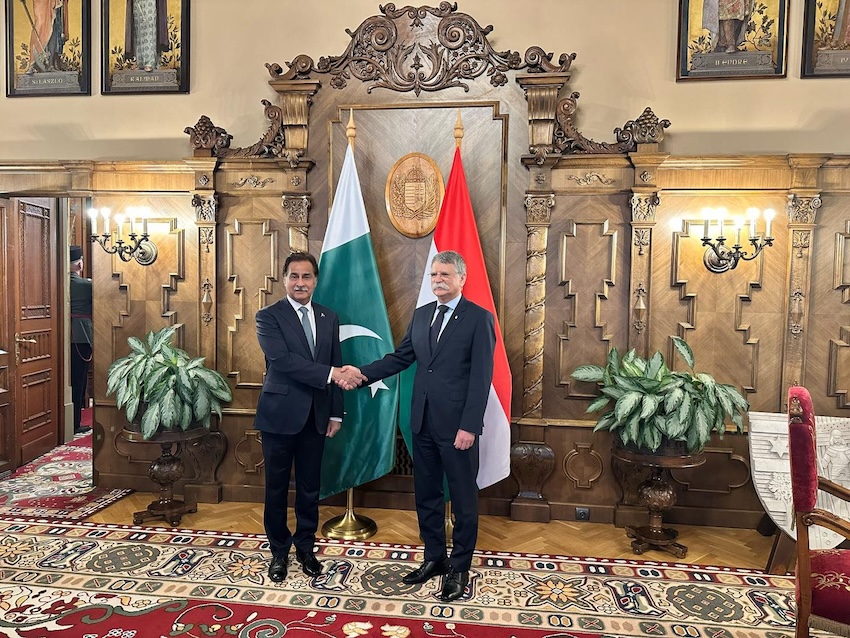
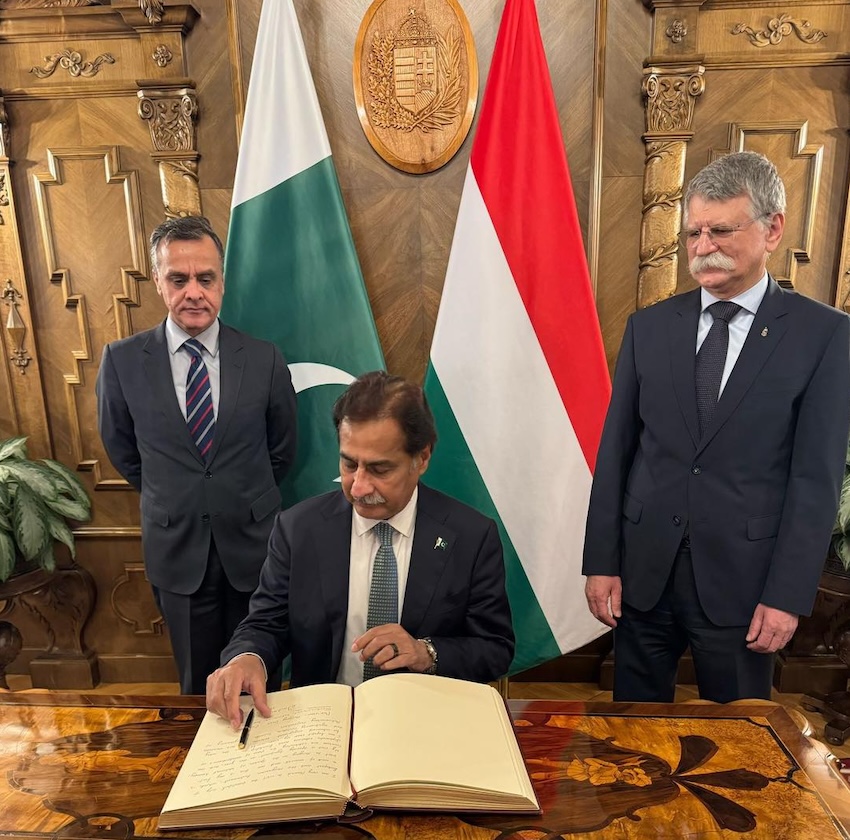
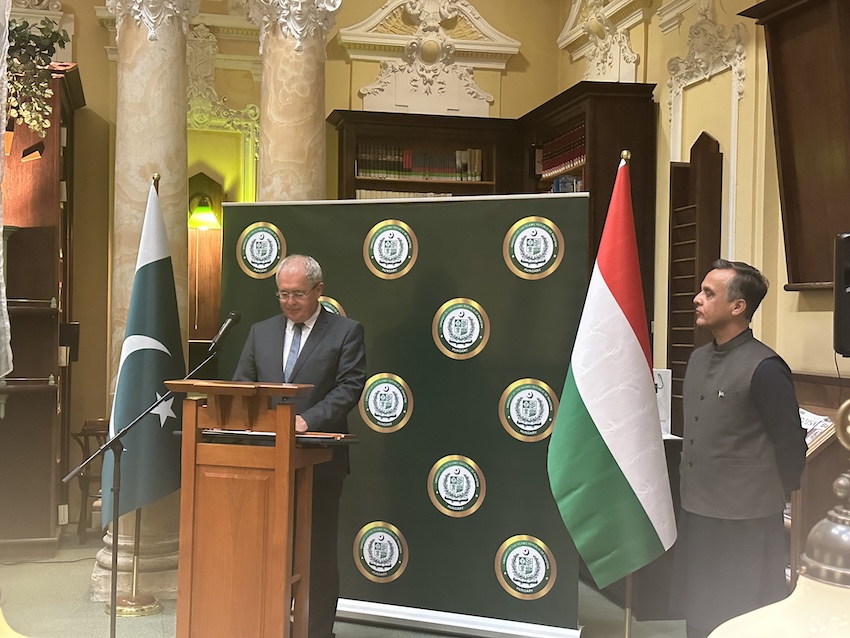
Our economic relations are also robust, supported by the Joint Economic Committee, which serves as an effective platform for identifying new opportunities. I must highlight MOL Group’s (Hungarian multinational Oil and Gas Co.) long-standing presence in Pakistan, a partnership spanning over 25 years. MOL’s acquisitions in Pakistan constitute an integral part of the company’s global exploration and production portfolio and serve as a convincing model for establishing and maintaining successful international business relationships.
In the field of education, we are pleased to welcome many Pakistani students studying in Hungary, particularly through the Stipendium Hungaricum Scholarship Programme, under which 400 Pakistani students are offered scholarships annually – a flagship initiative of our collaboration.
Listing all the achievements of our partnership would be impossible, but it is fair to say that over the past six decades, mutual trust and shared interests have helped us expand cooperation in multiple fields. In today’s rapidly changing world and turbulent international and security environment, such relationships hold an exceptional value and importance. I am confident that our partnership will continue to flourish for another 60 years – deepening understanding and friendship between our peoples. Once again, I thank everyone involved in organizing this exhibition, which so beautifully celebrates this milestone in our shared history. I wish you all an inspiring experience.”
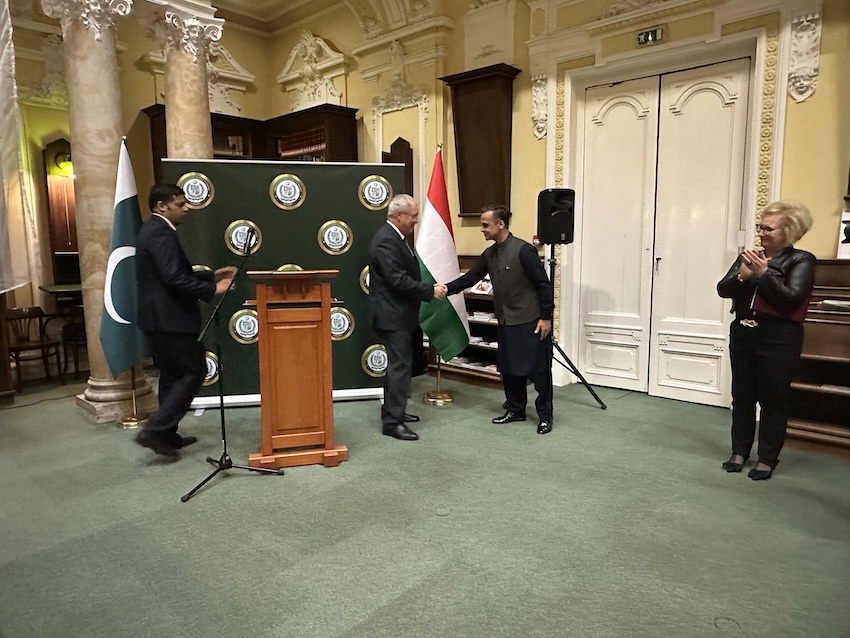
The event stood as a testament to friendship and cooperation between Pakistan and Hungary, highlighting how art, literature and culture collectively form a universal language of beauty and understanding, transcending borders and strengthening bonds between nations.
The guests enjoyed the exhibition in a warm and engaging atmosphere, guided by the Curator’s insightful explanations.


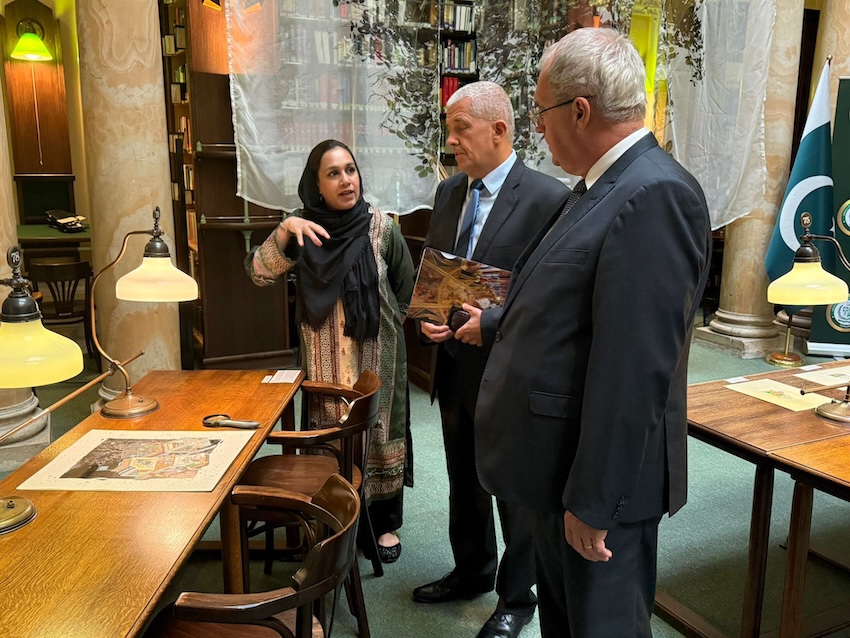

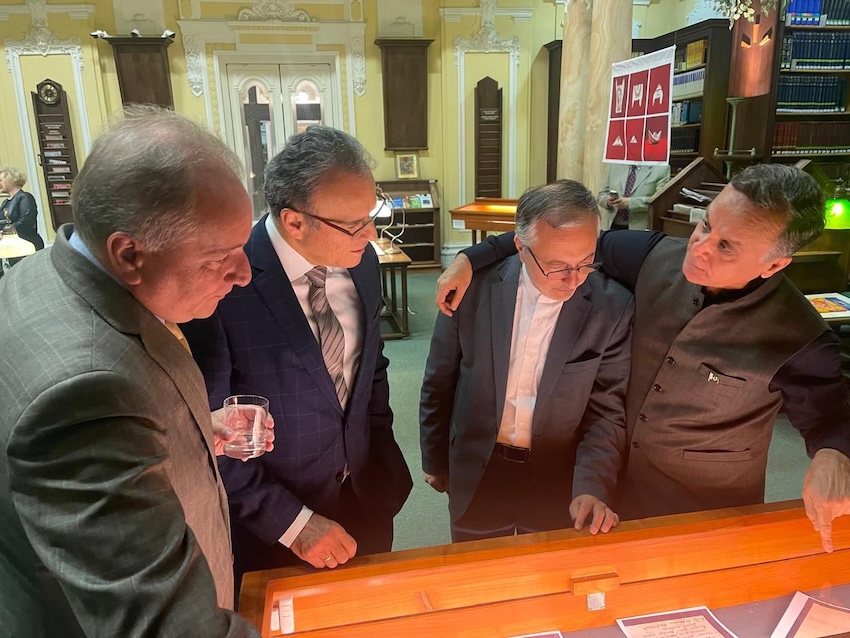



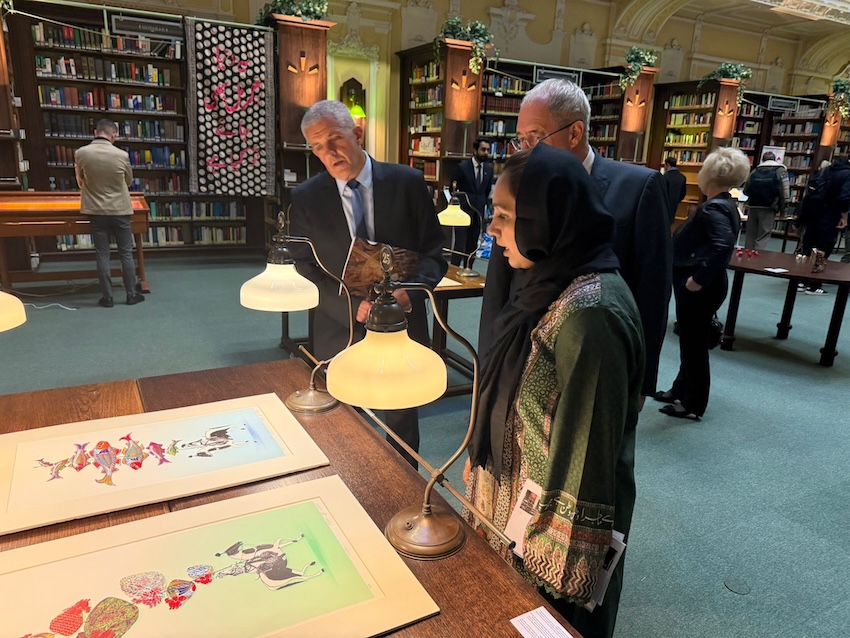
The various art pieces of the Pakistani artists were set in the beautiful main hall of the National Library of Foreign Literature, a 19th-century architectural gem that serves not only readers interested in world literature but also music lovers and researchers through its rich collection of music literature and scores.





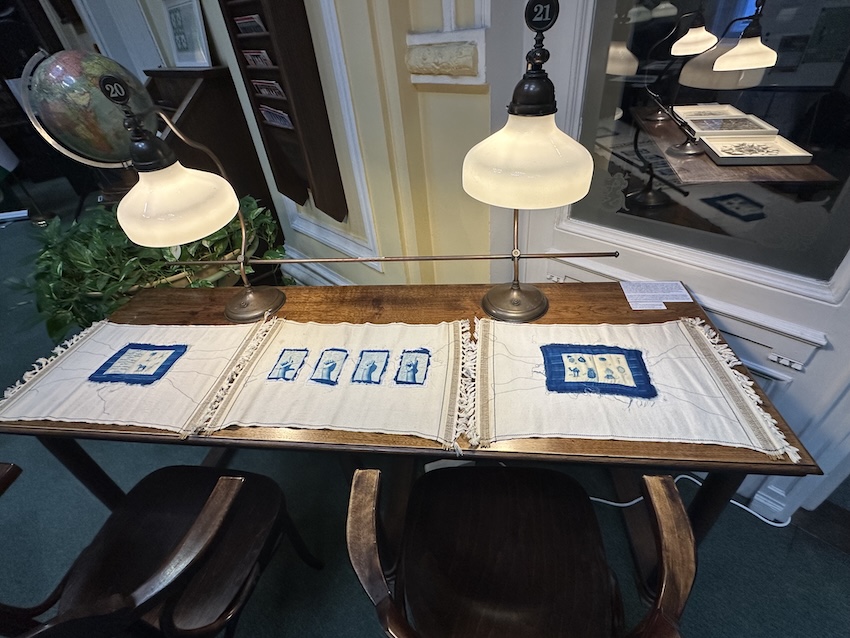
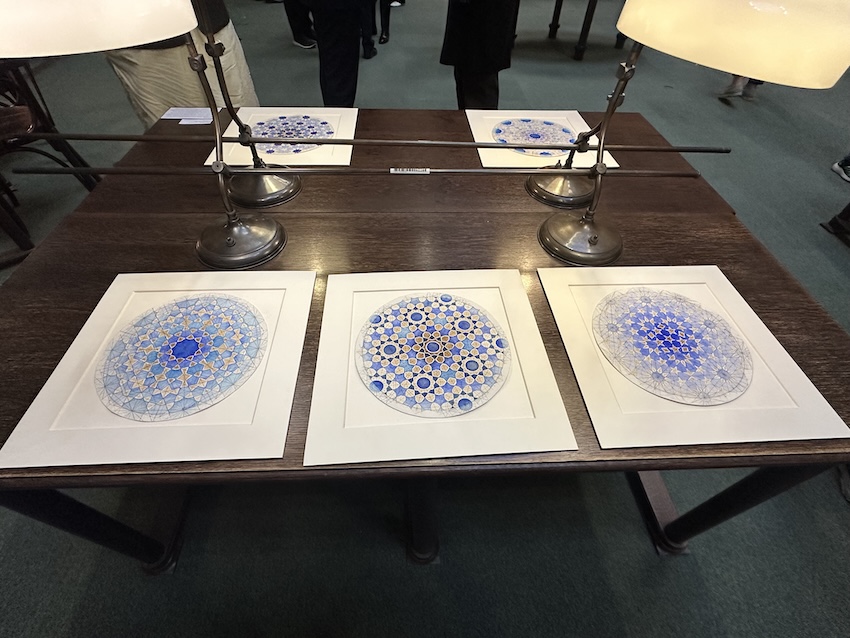

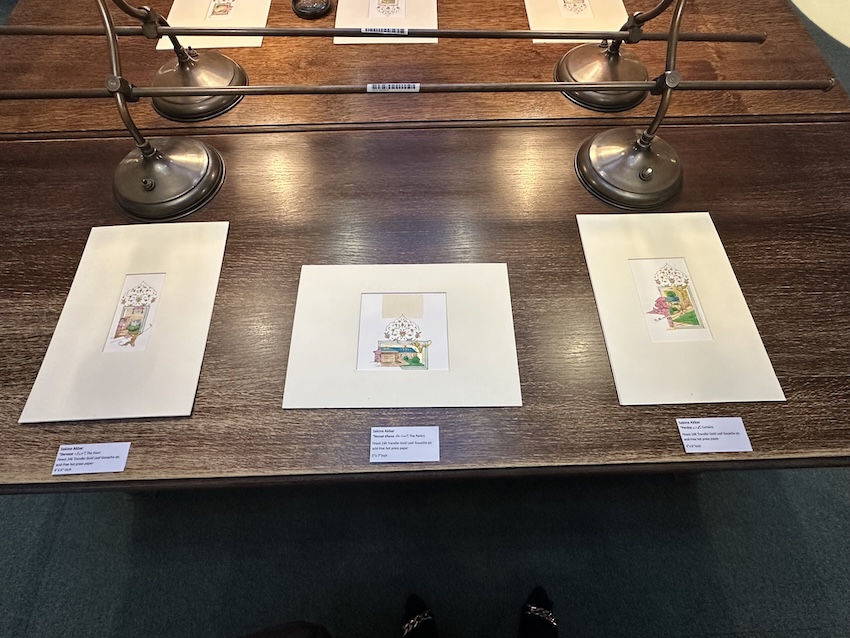

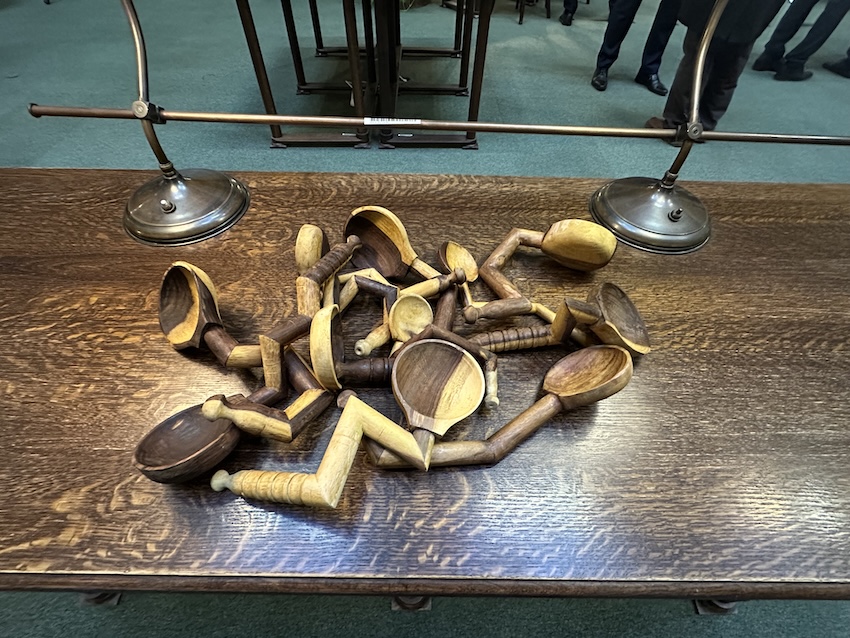
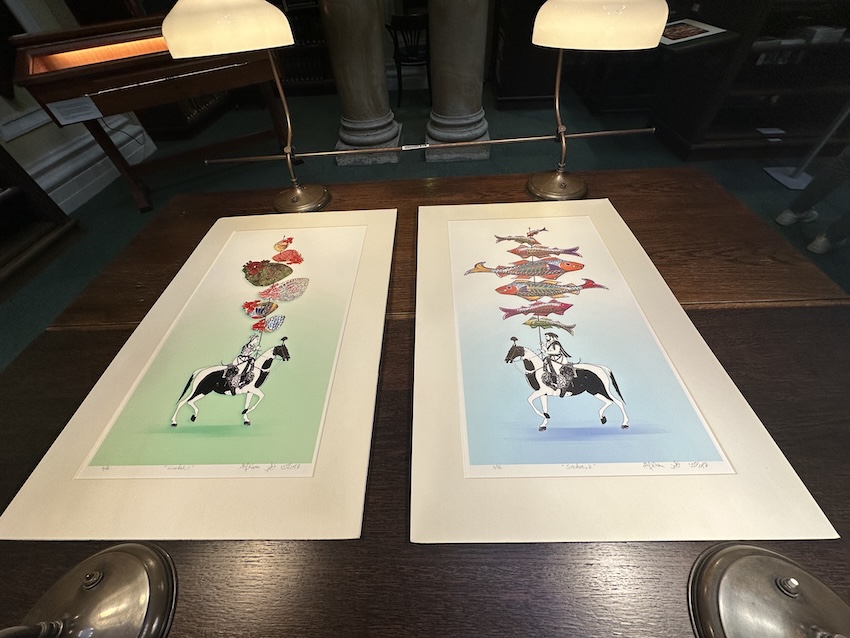
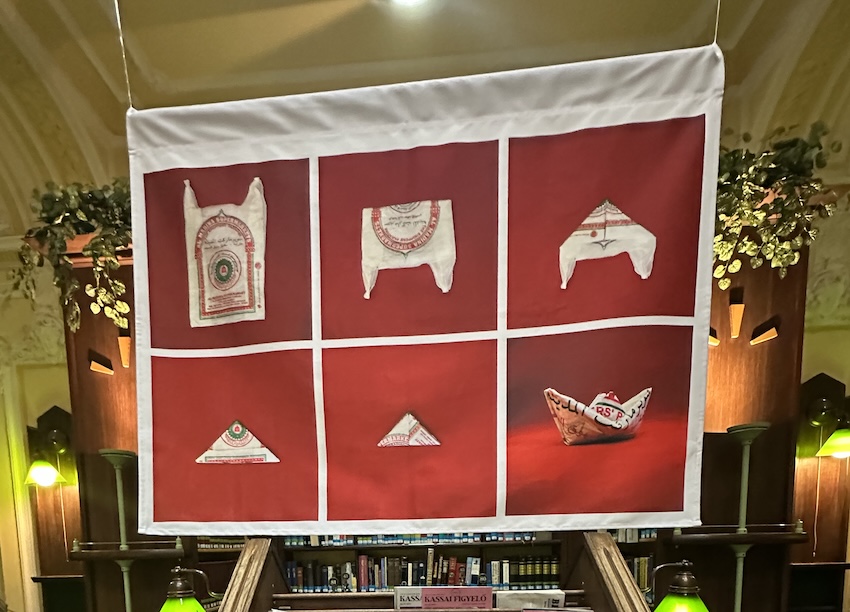
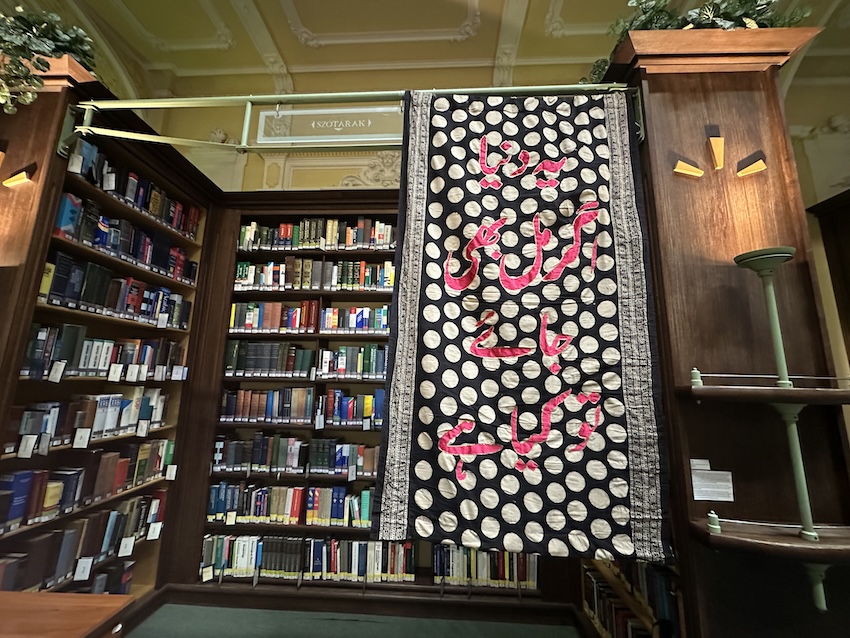
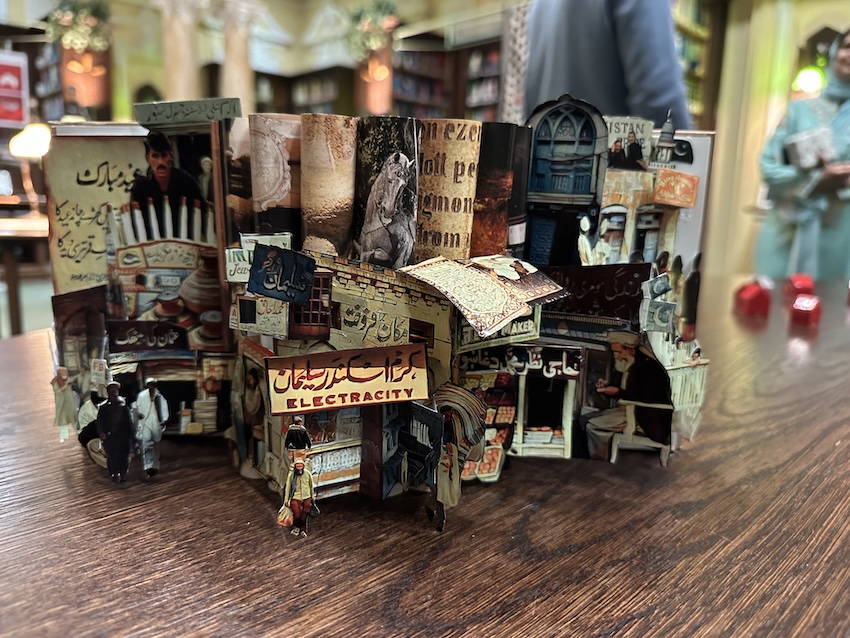


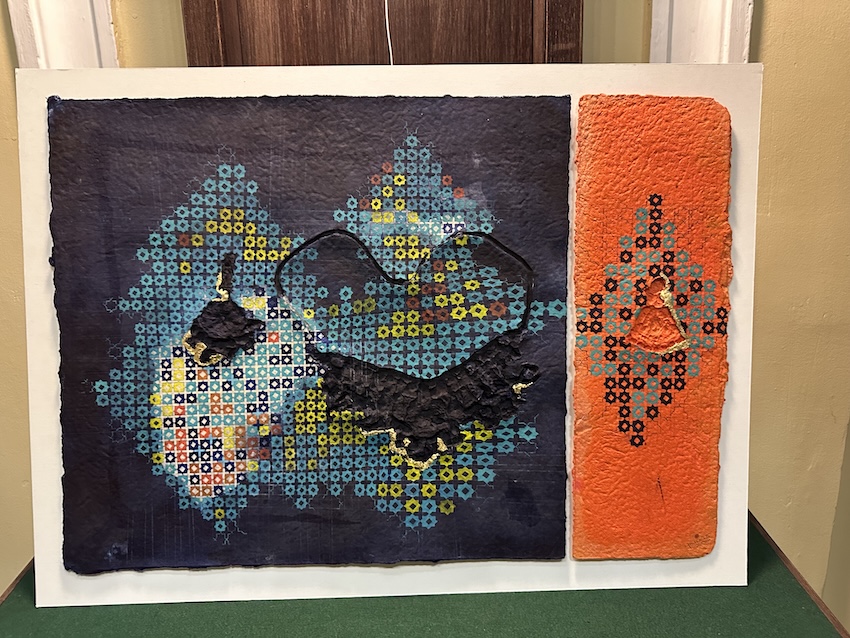
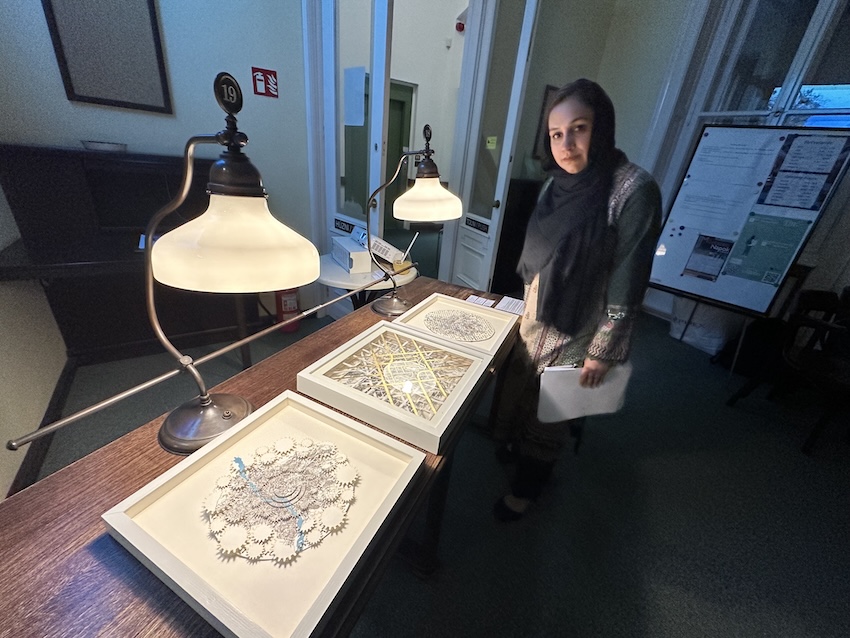

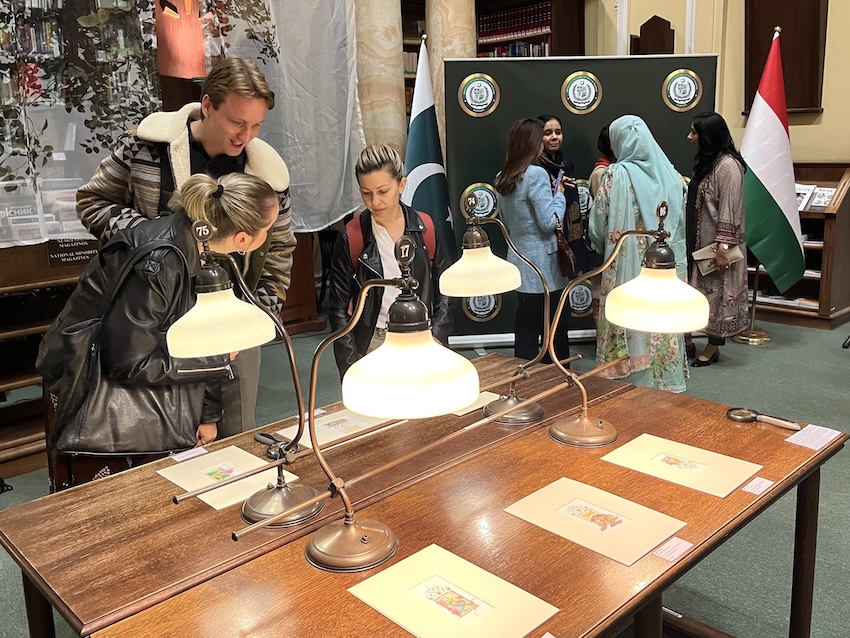
Beyond its role as a library, the institution functions as an active cultural centre – hosting exhibitions, concerts, and literary events that celebrate both Hungarian and international creativity. This setting made it an especially fitting venue for an exhibition that bridges cultures through art.
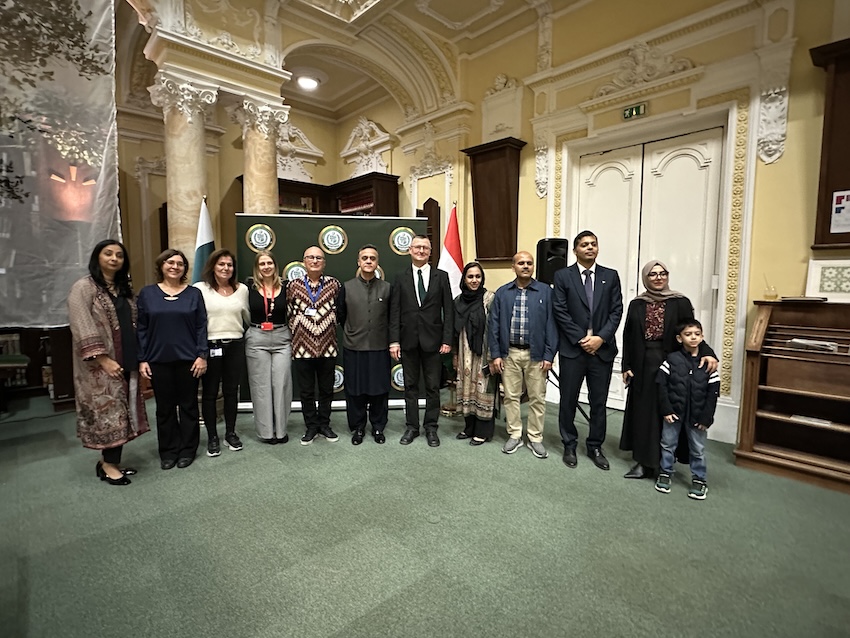
Source: Embassy of Pakistan in Budapest
Photos from the Embassy of Pakistan in Budapest, and Diplomatic Press Agency

